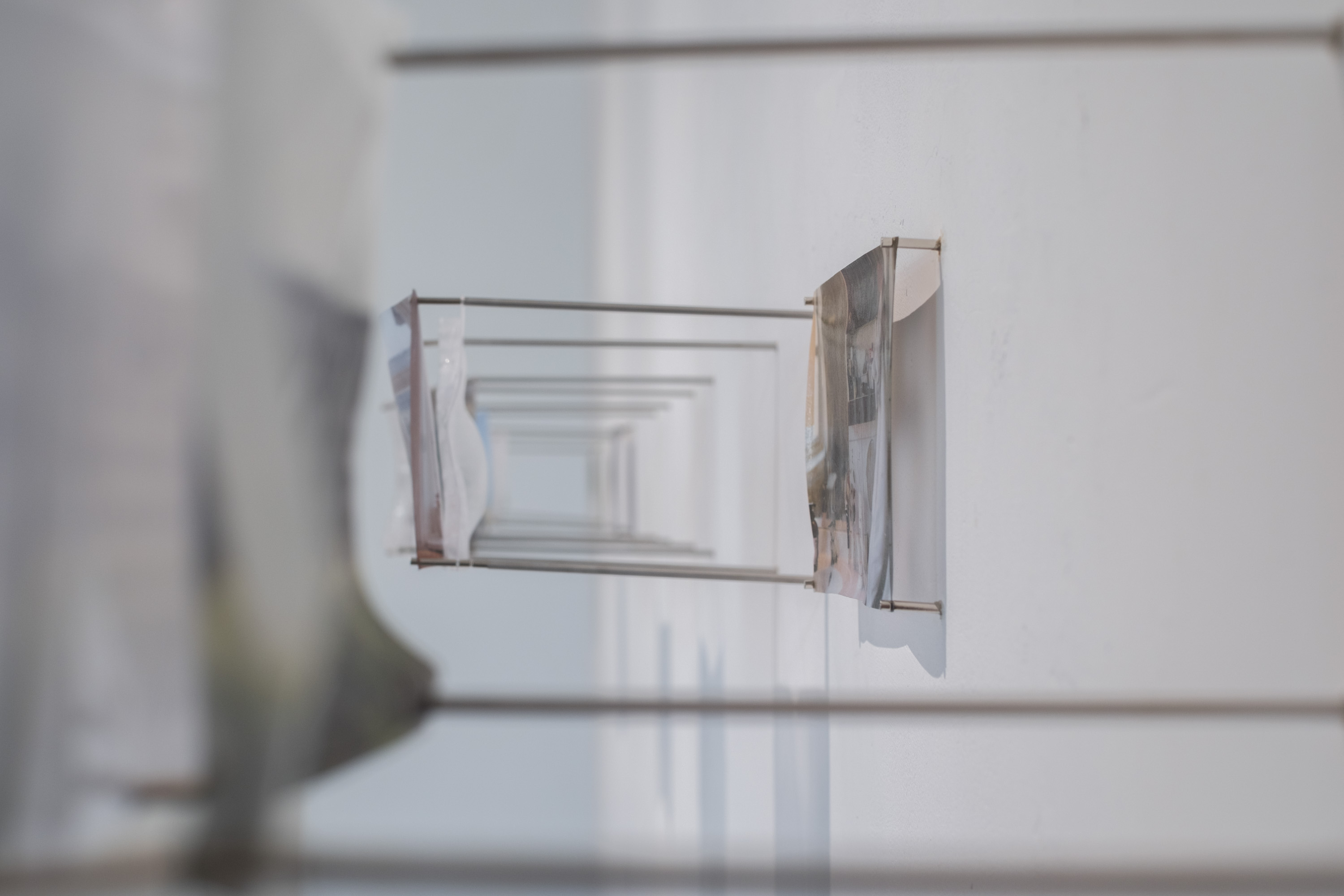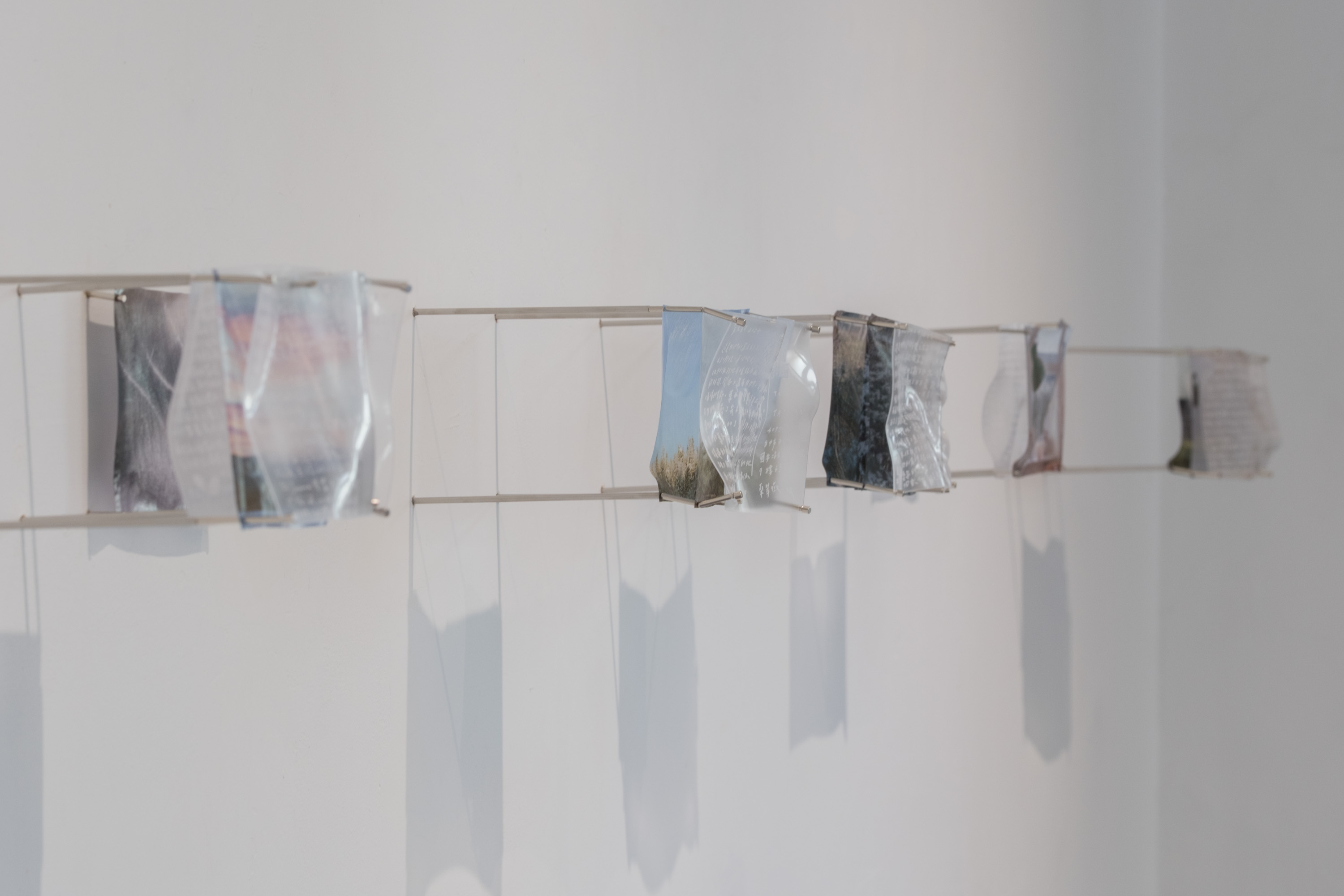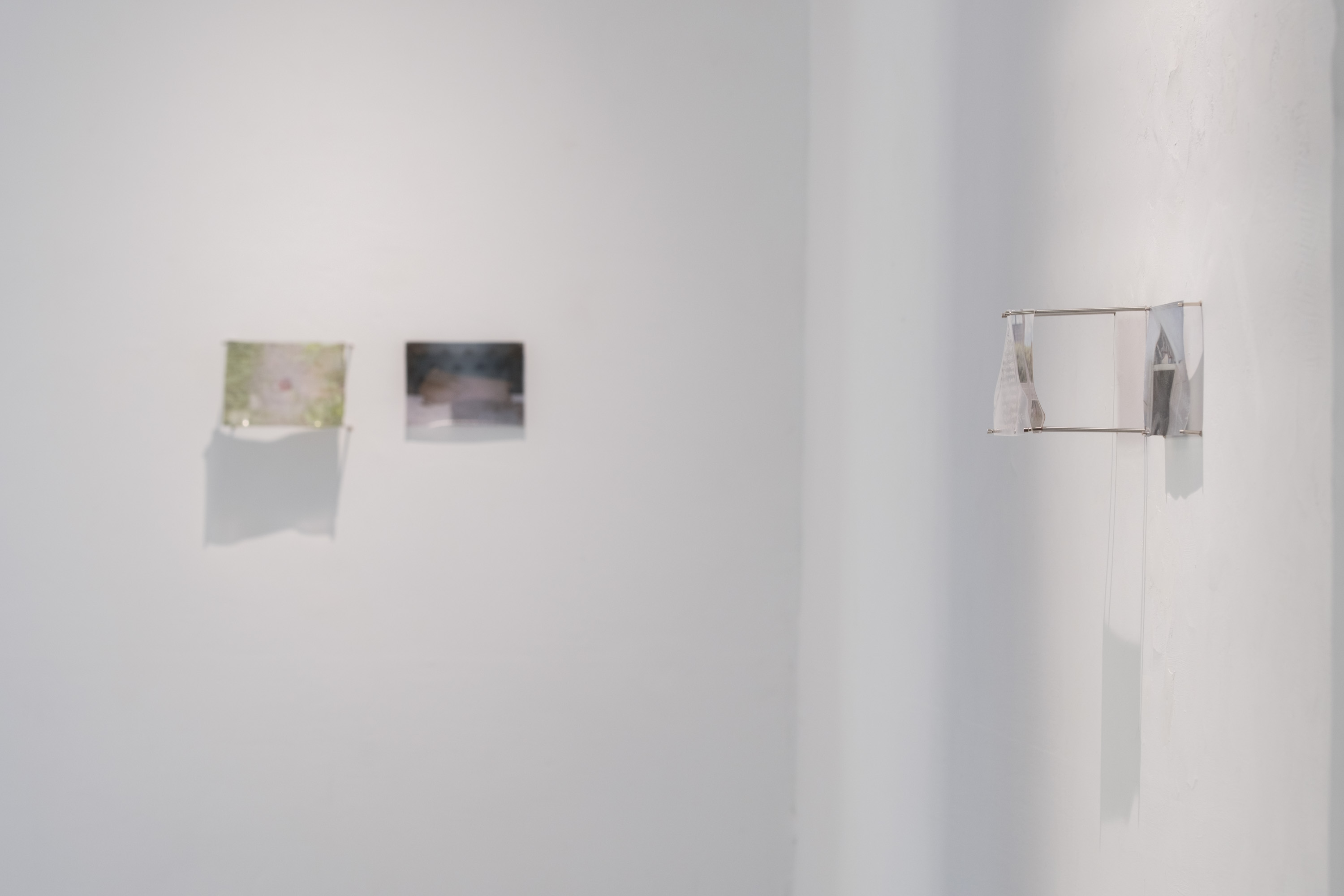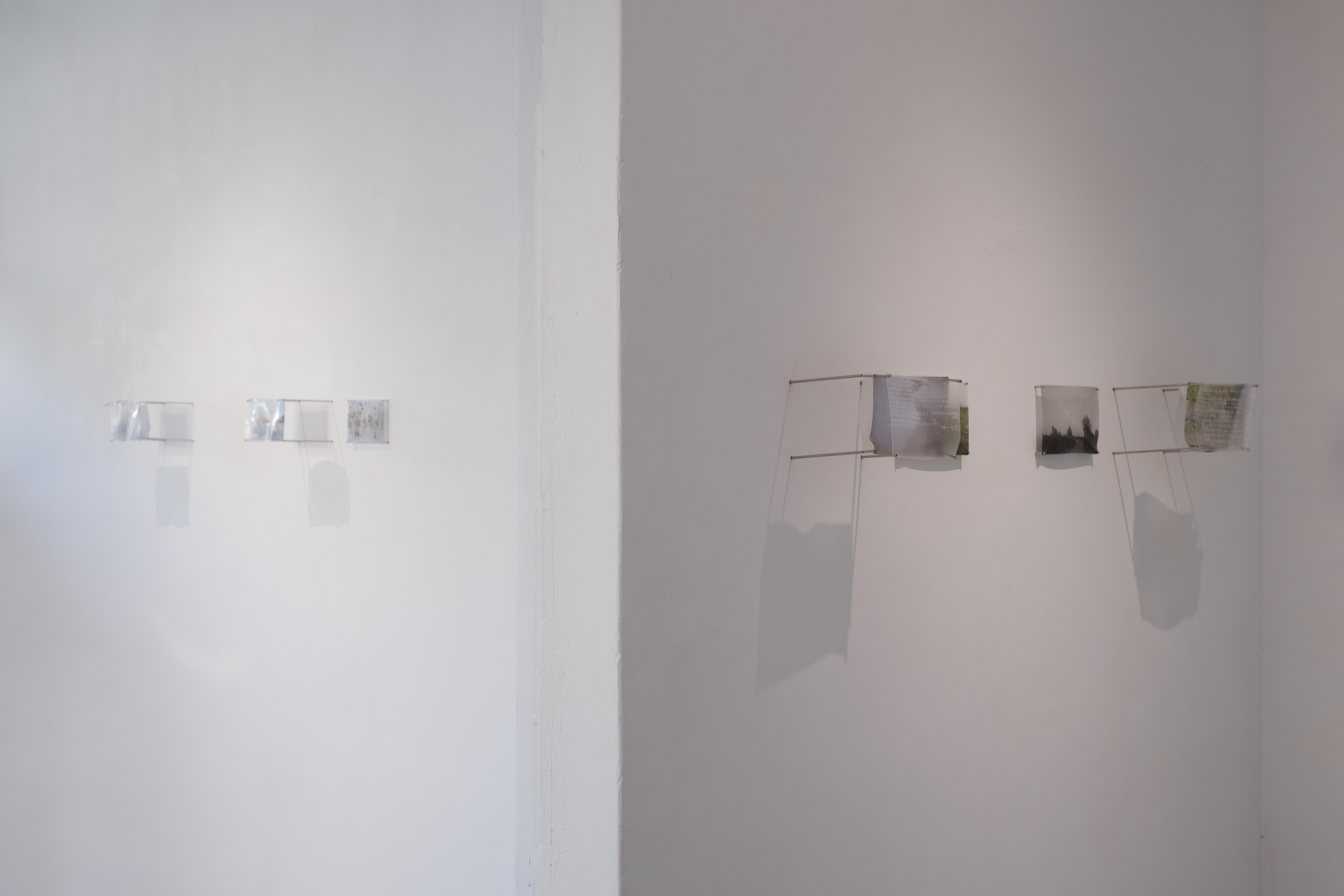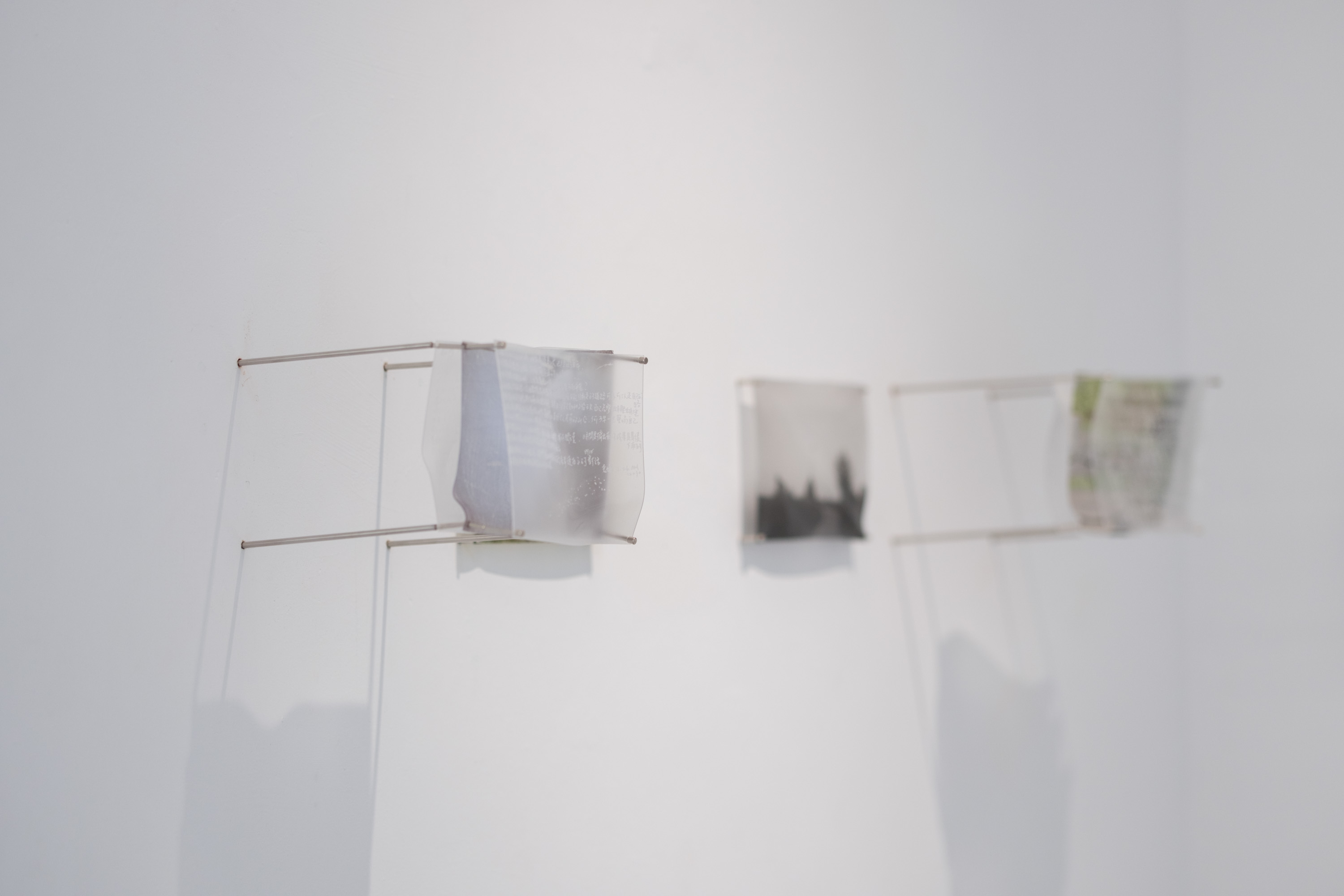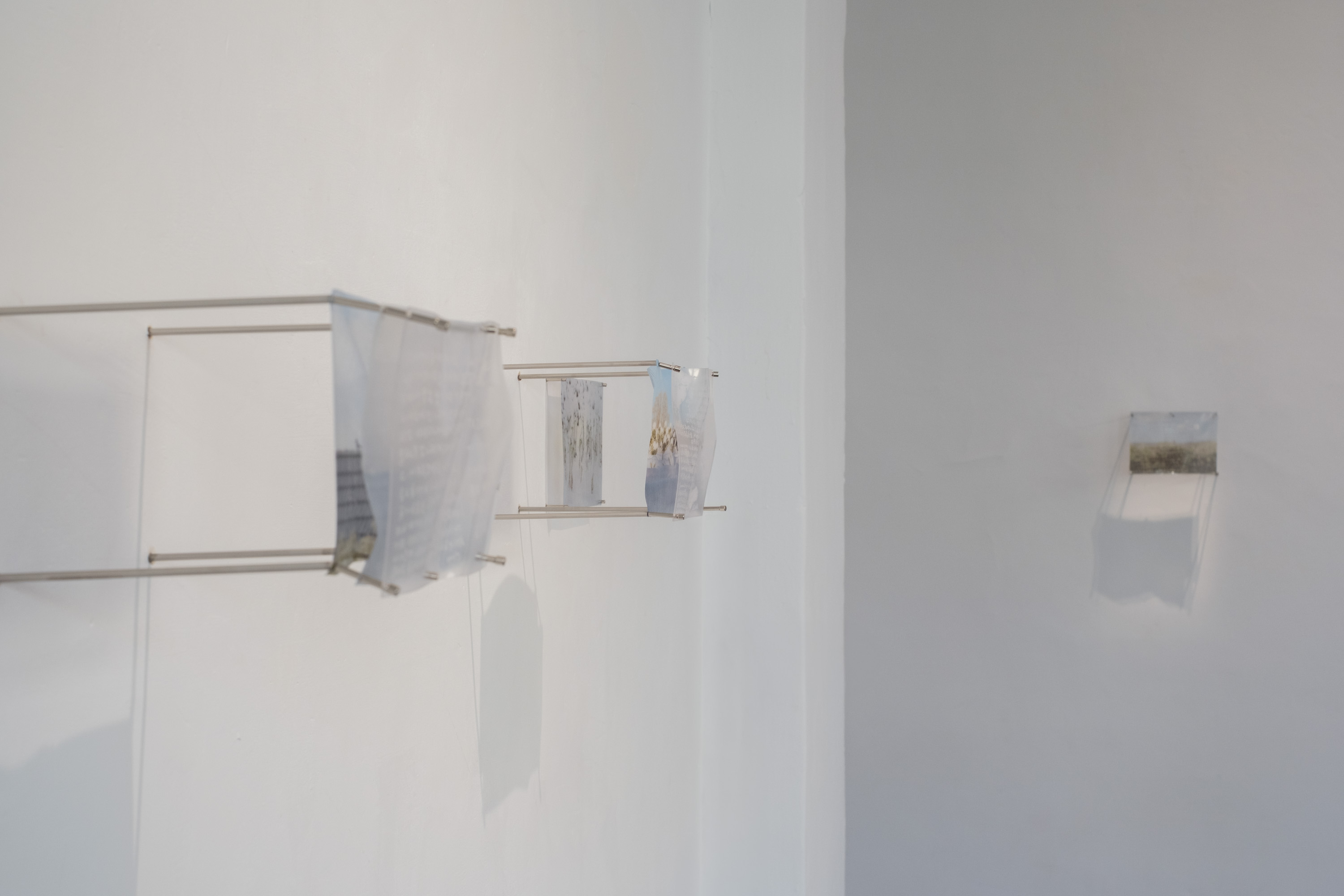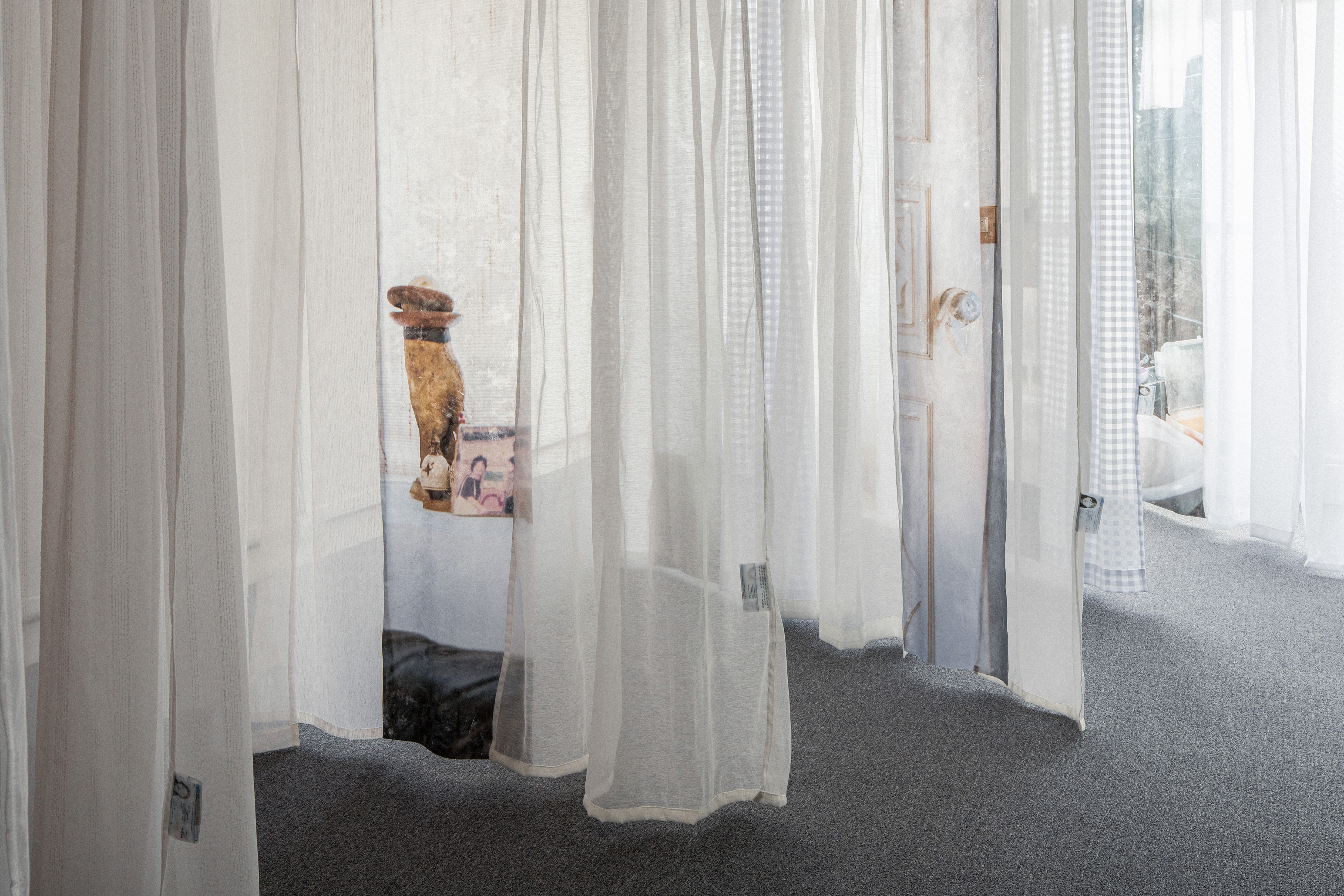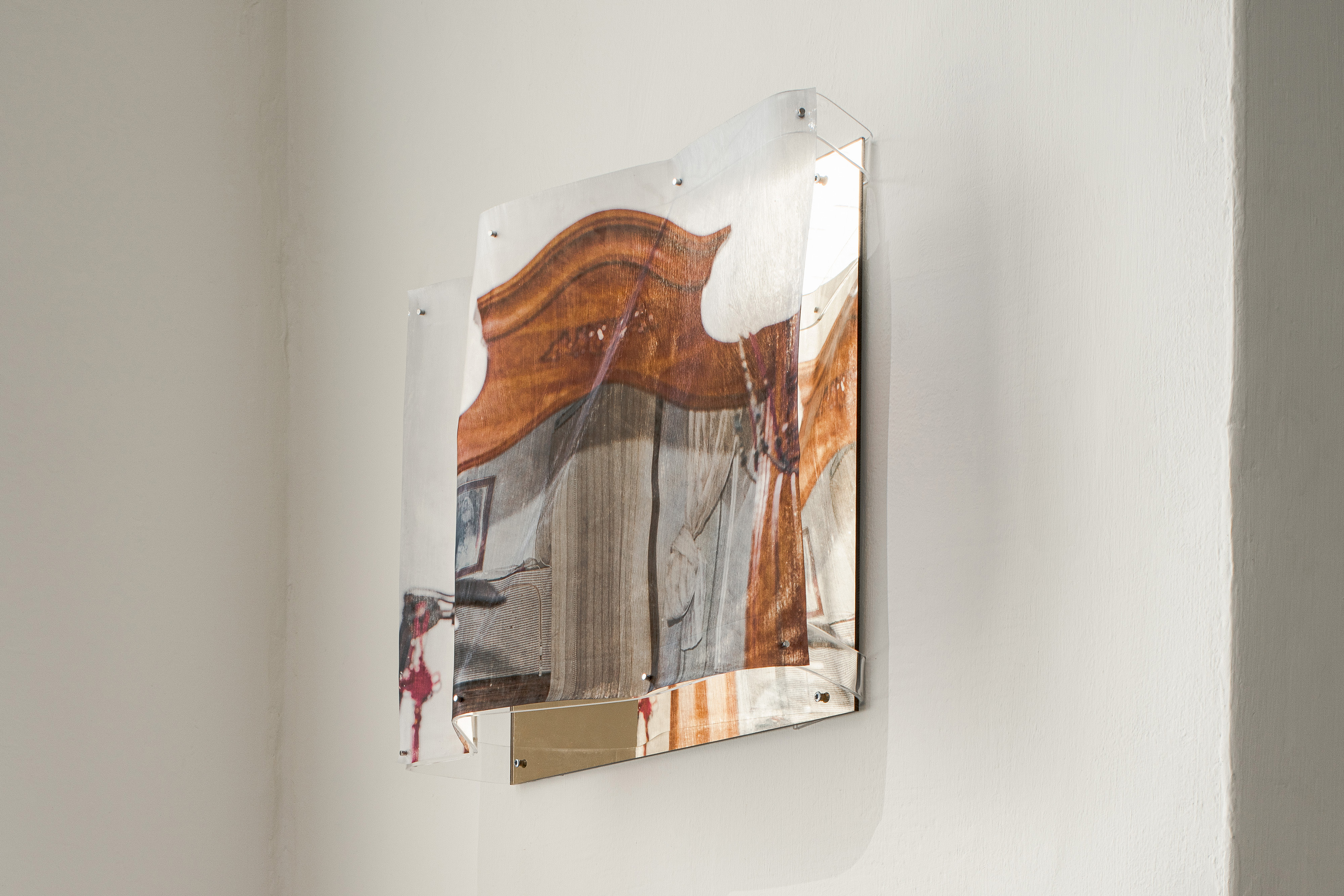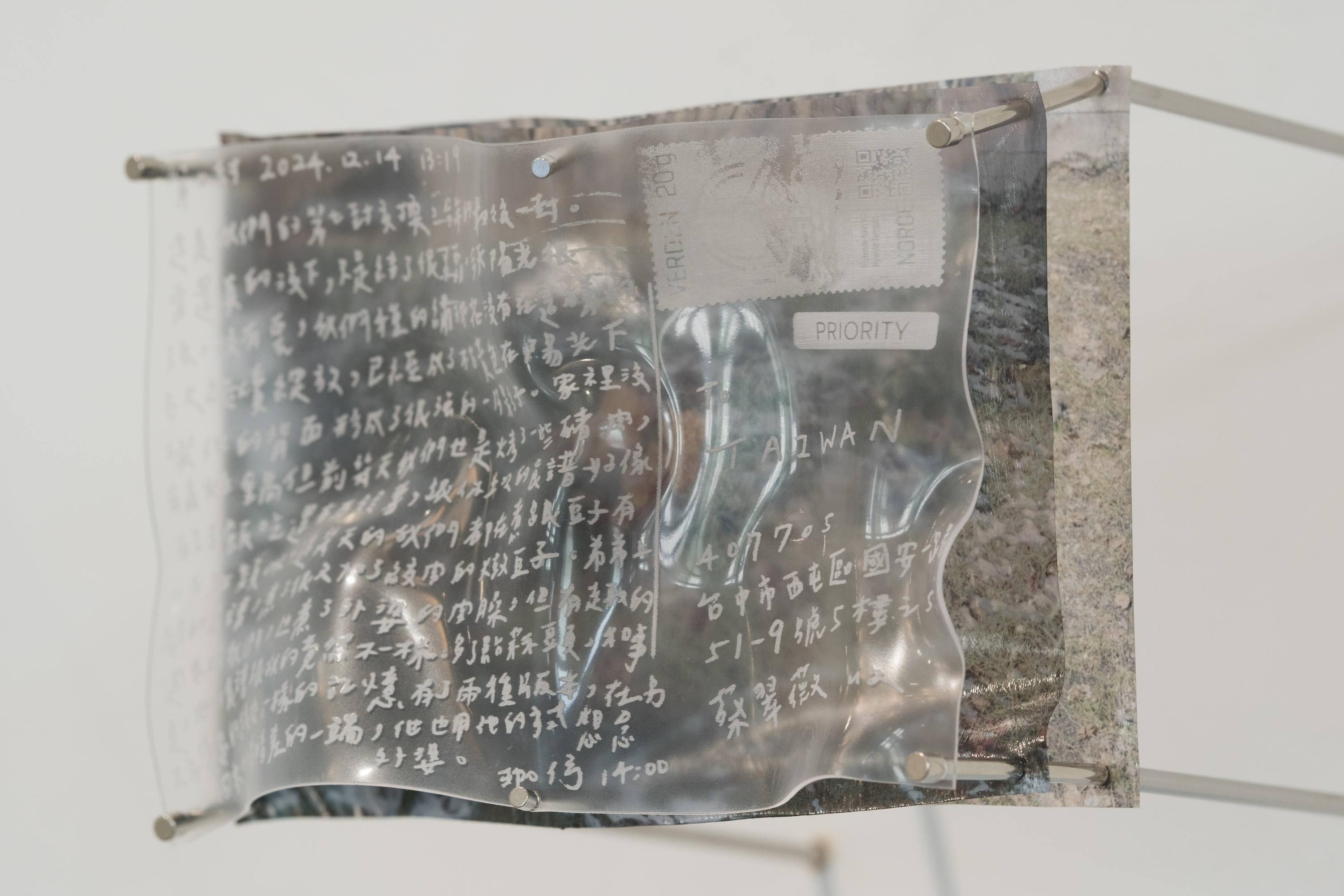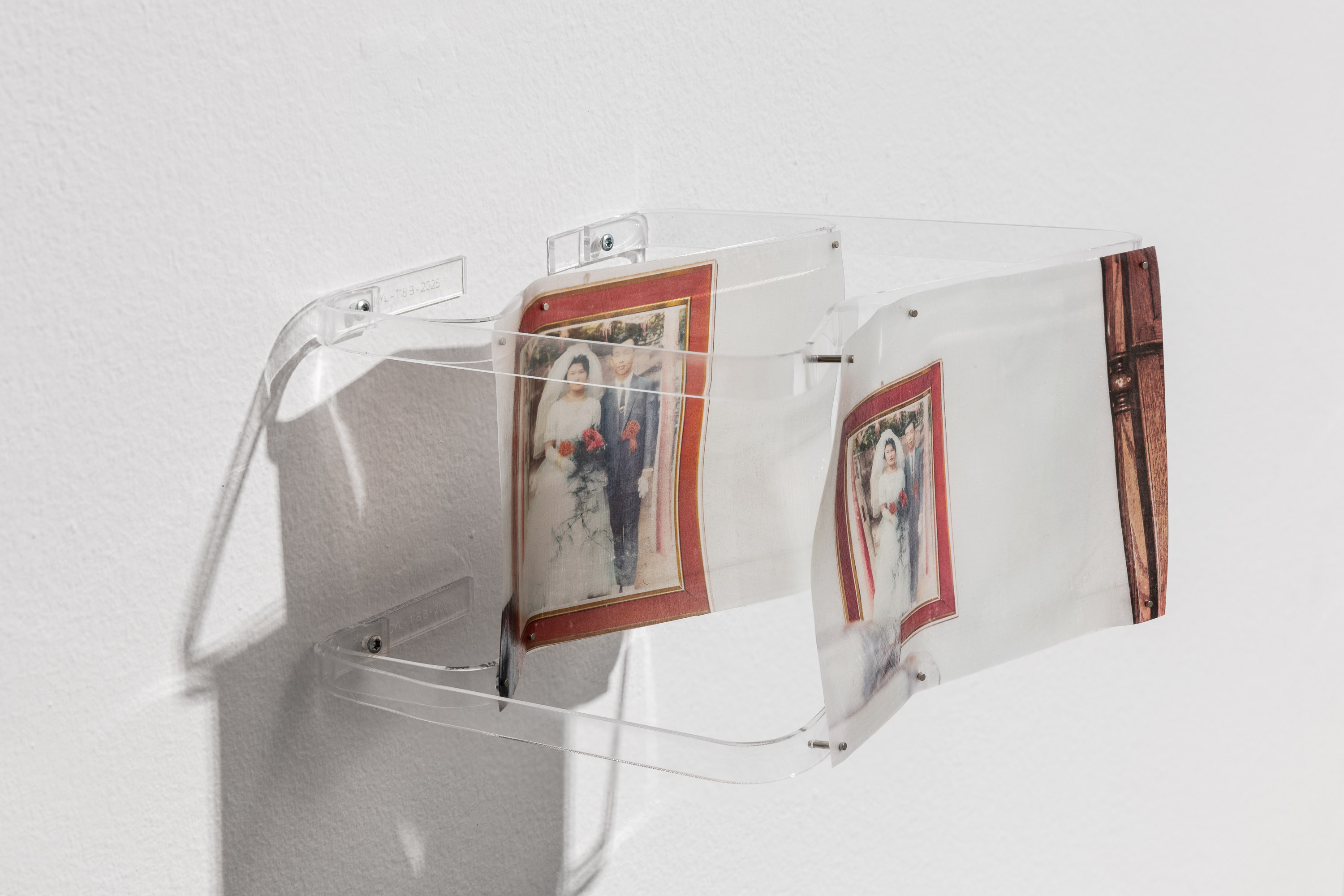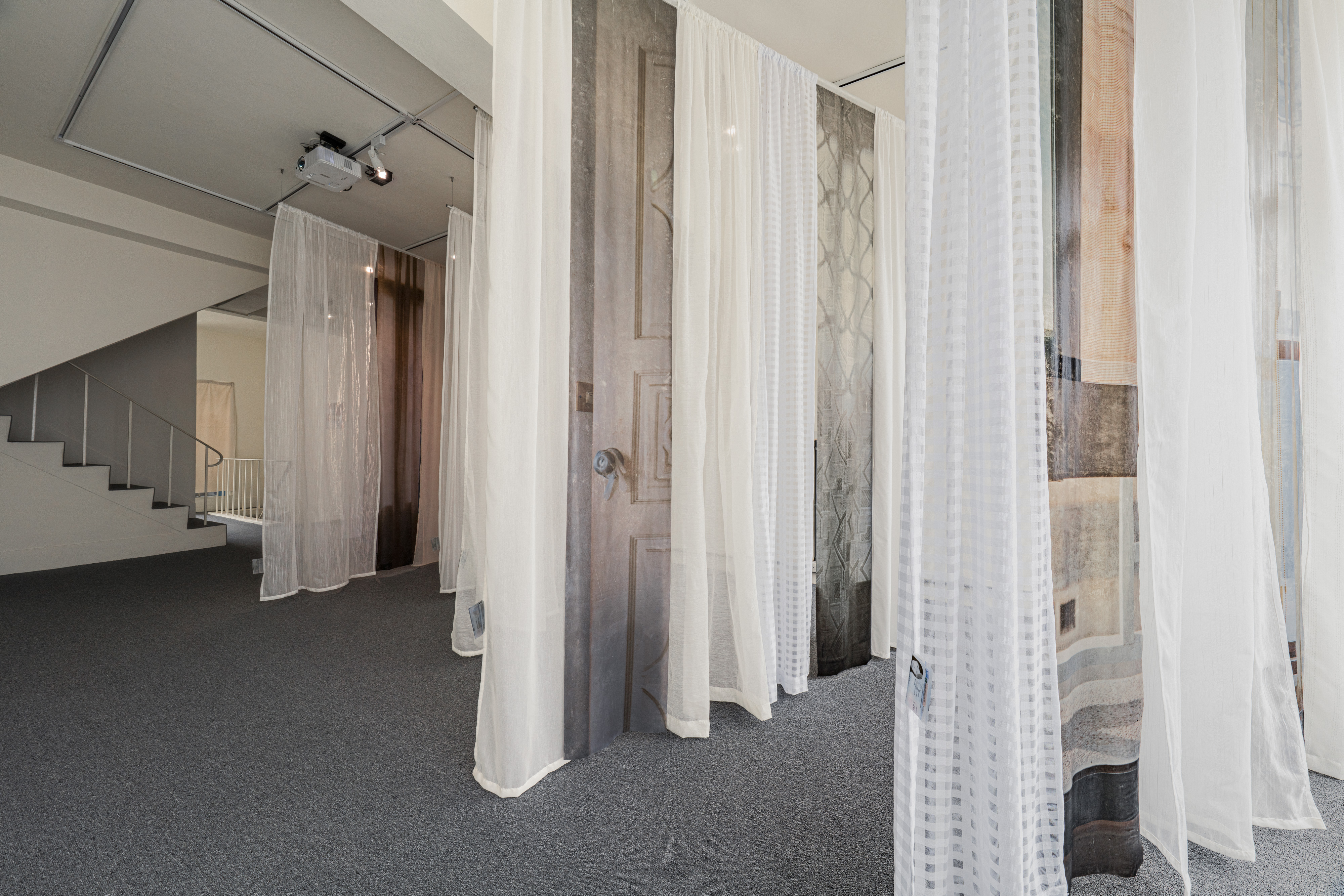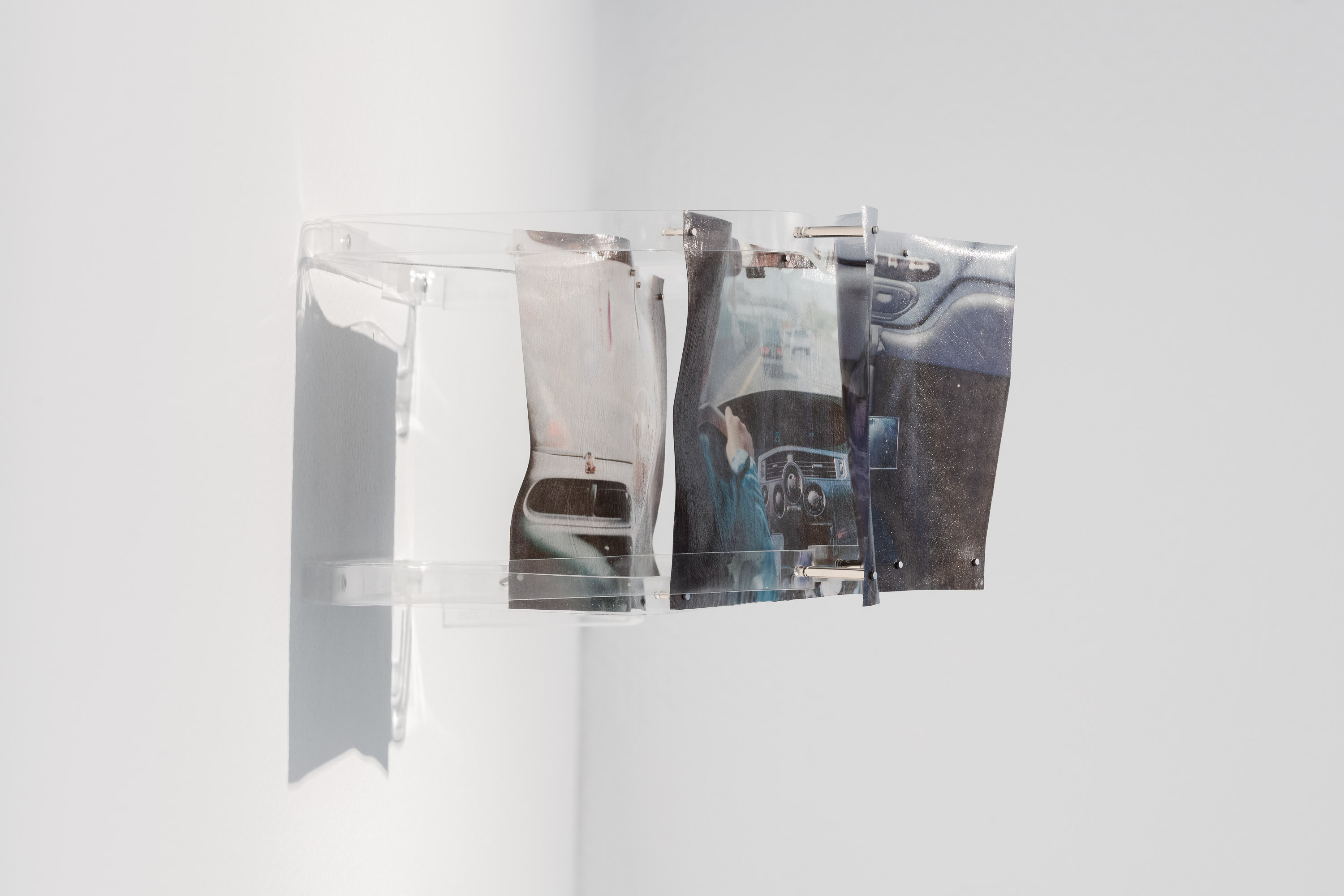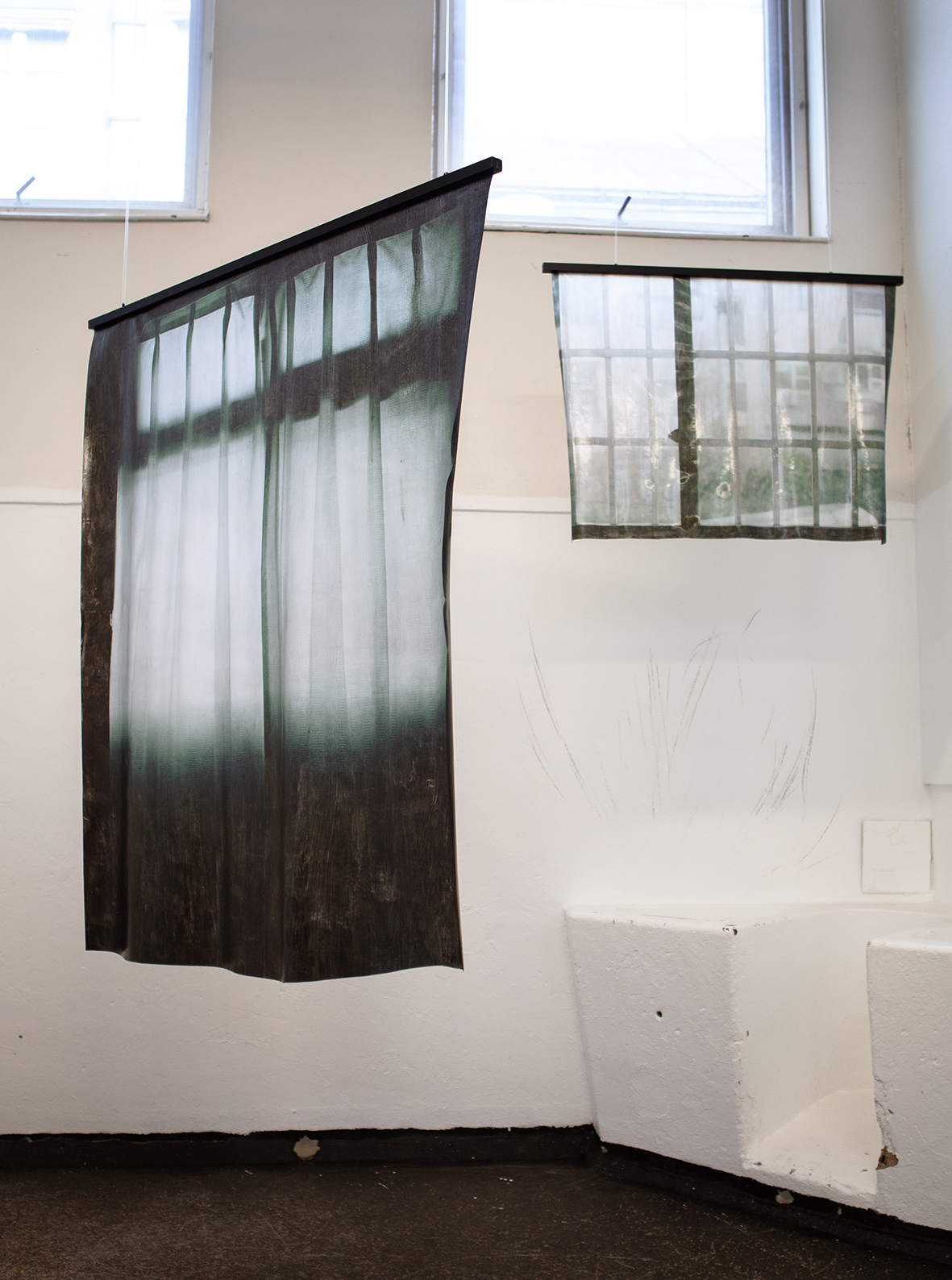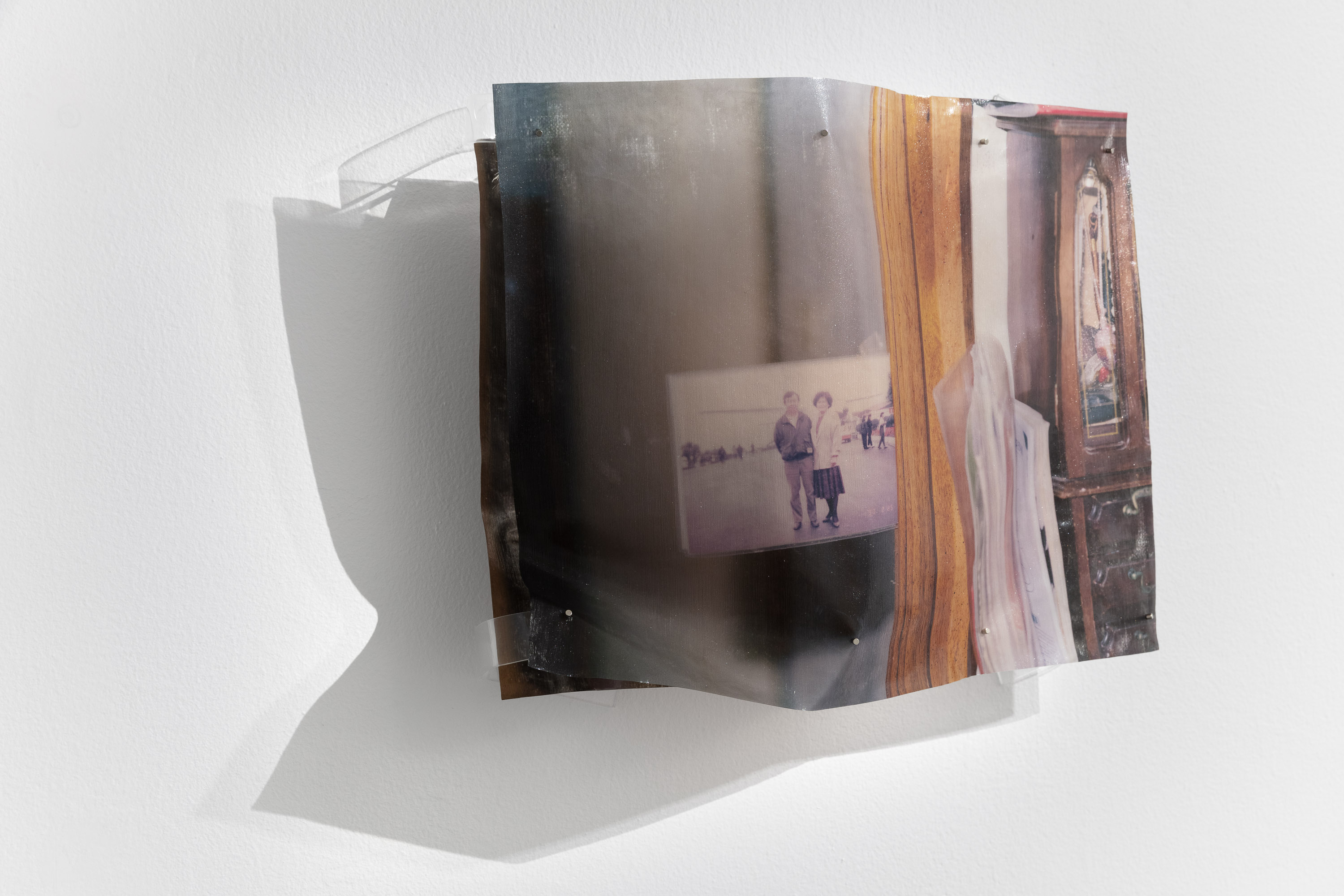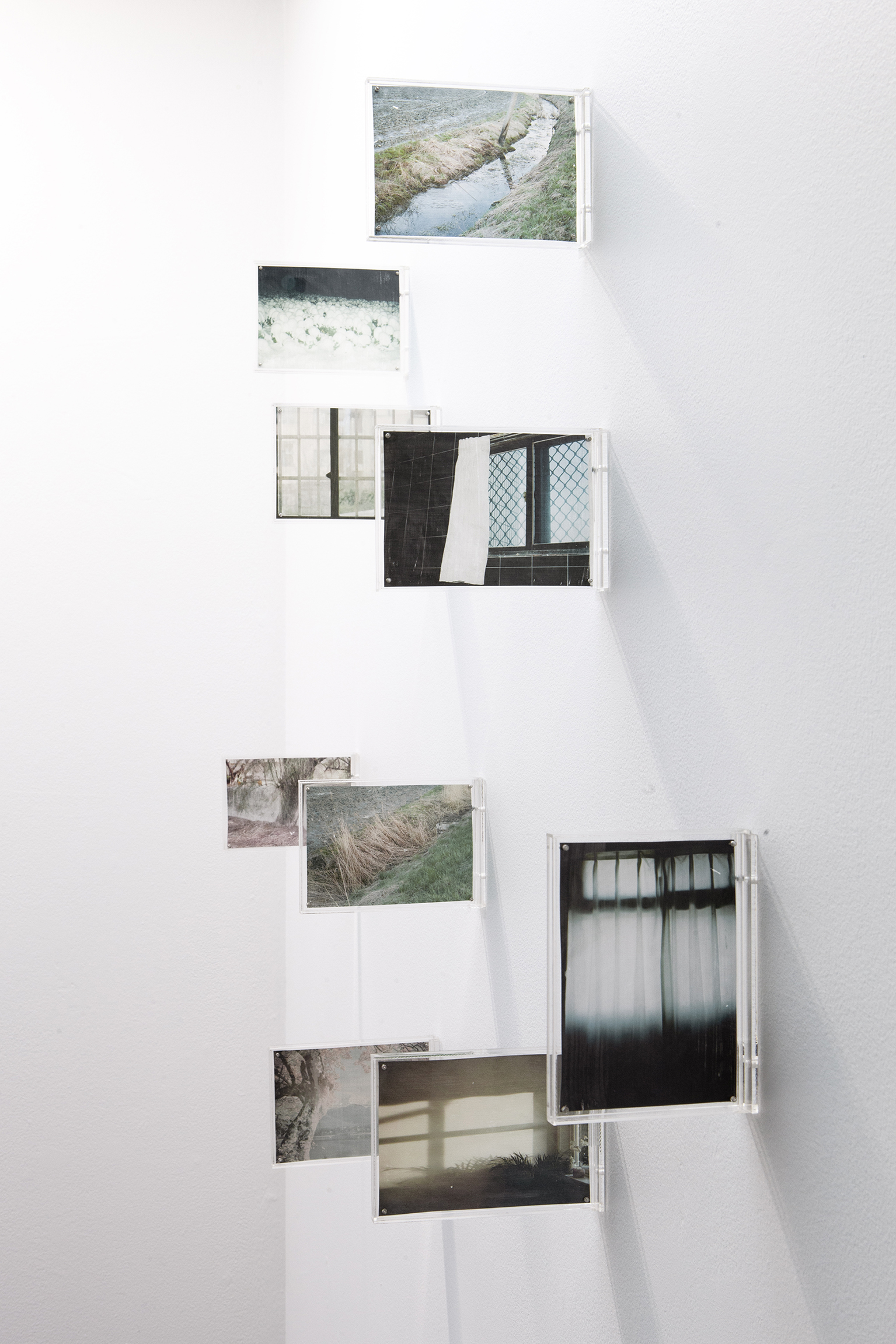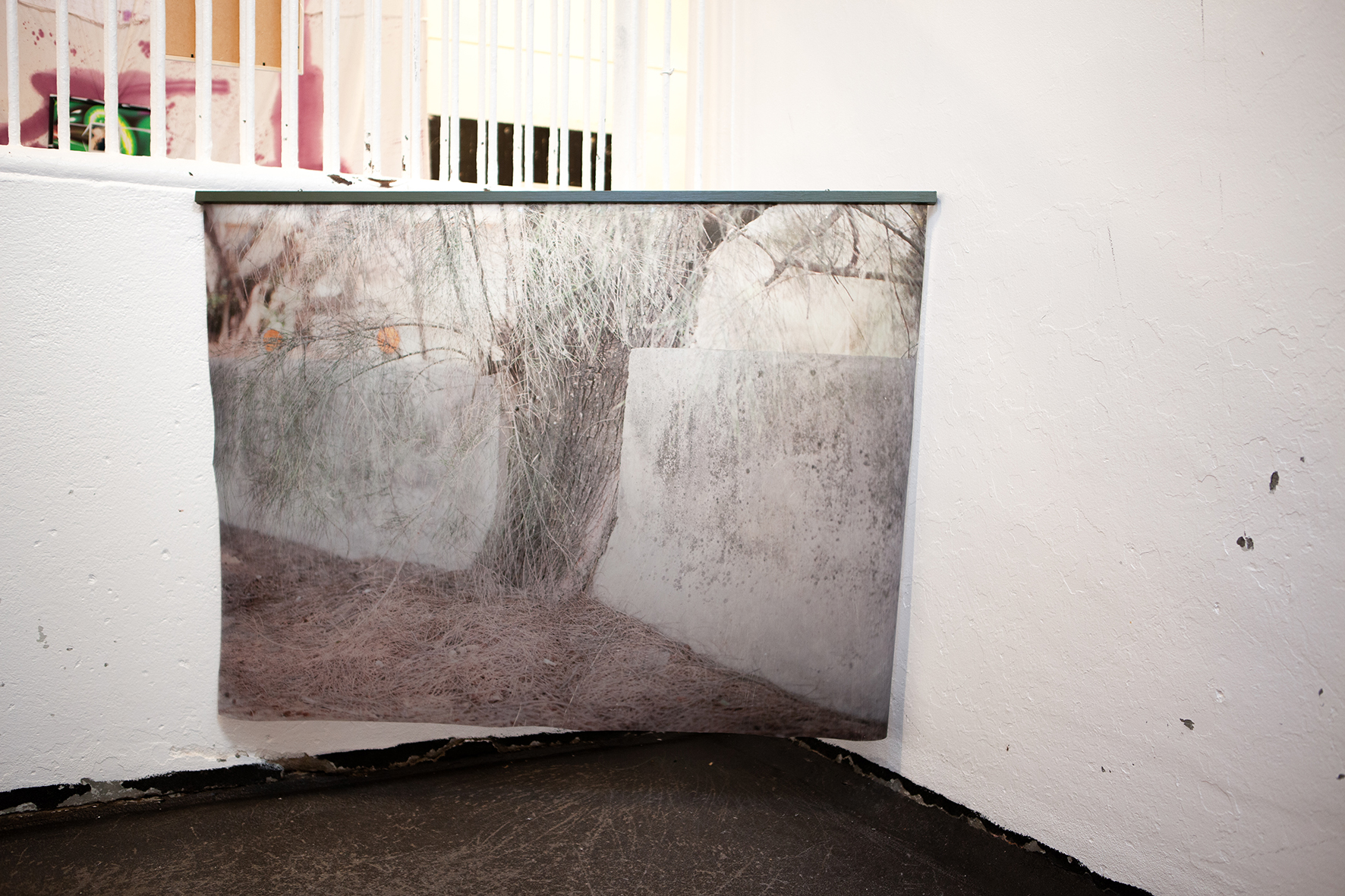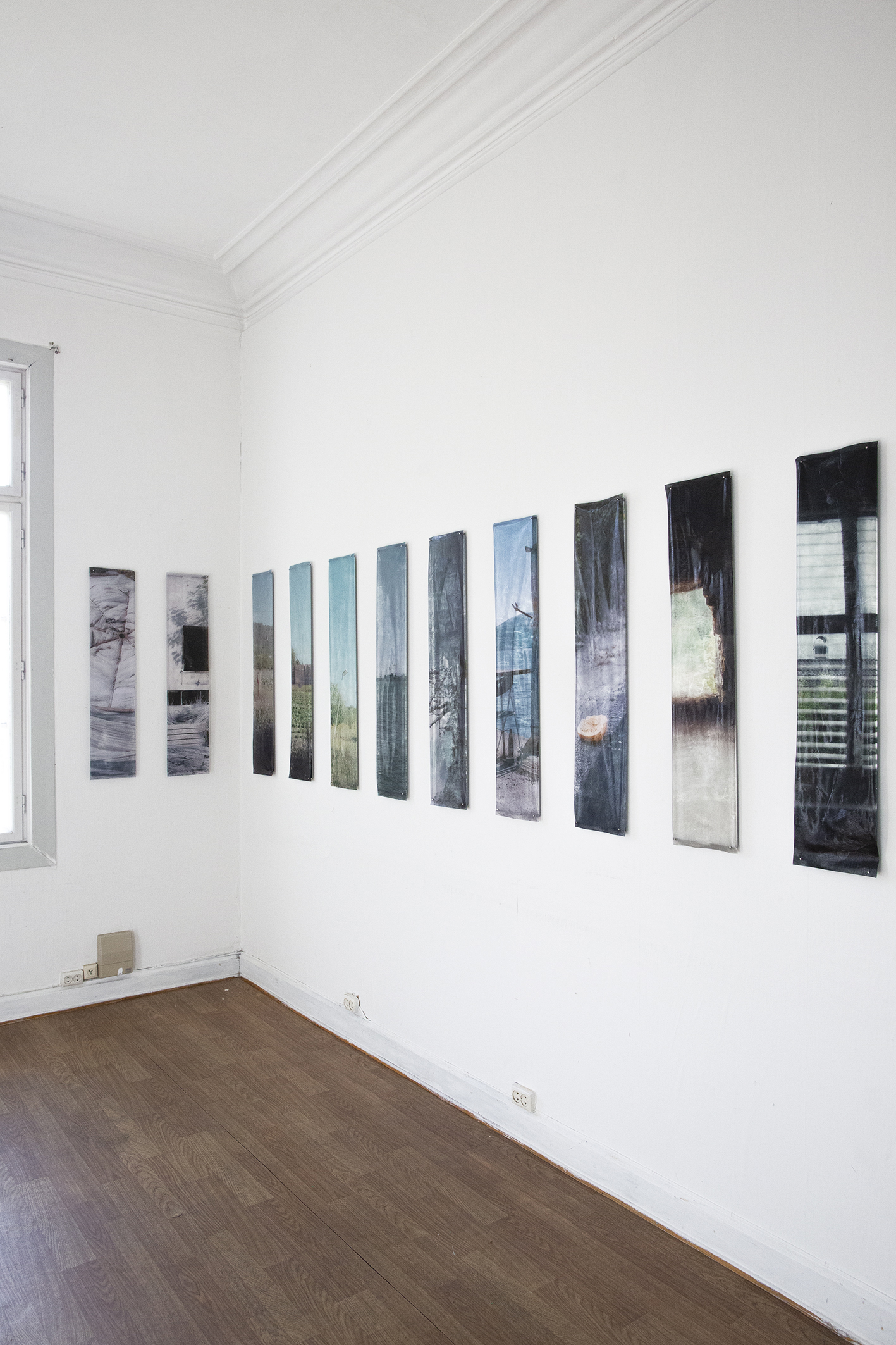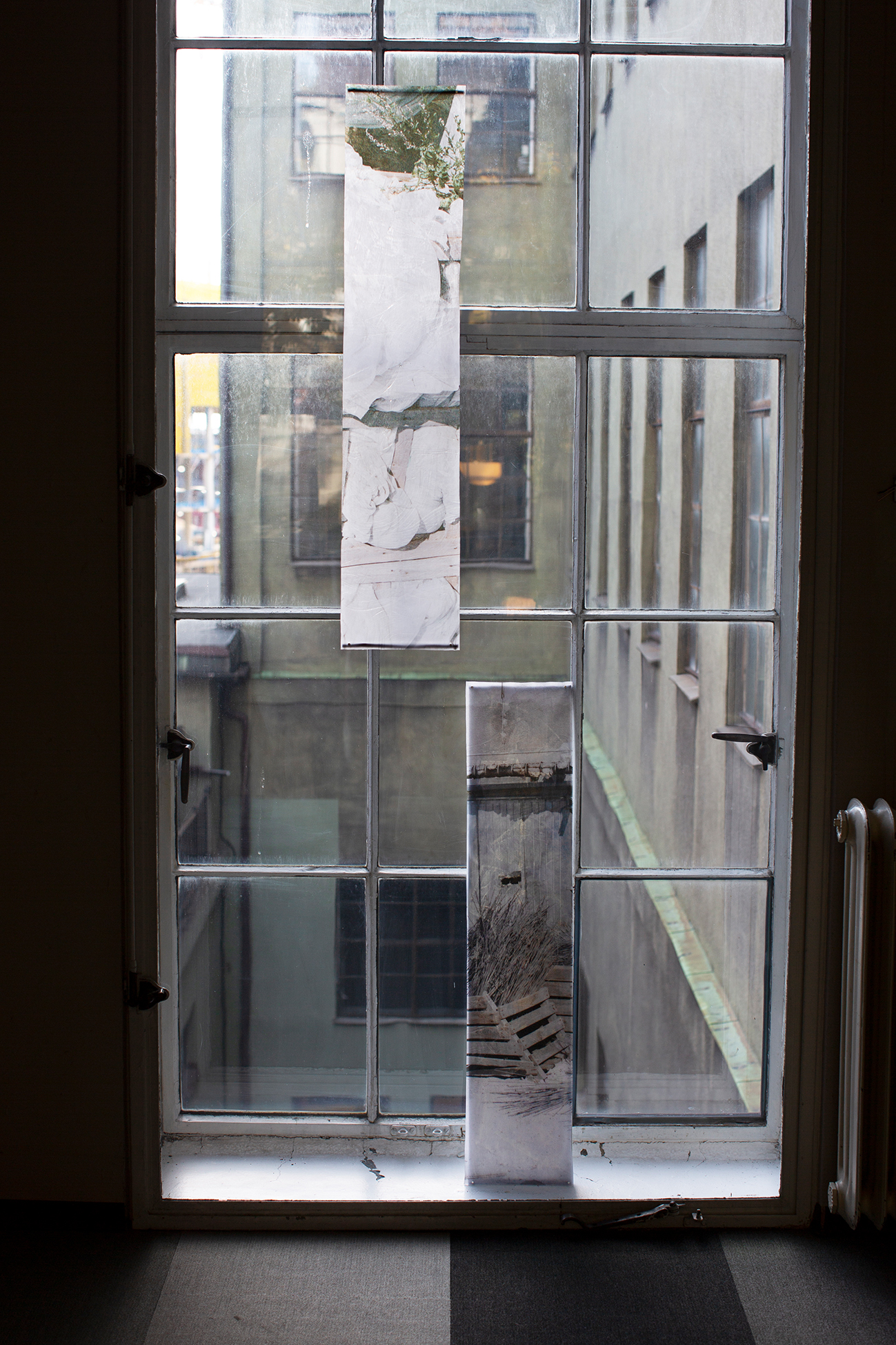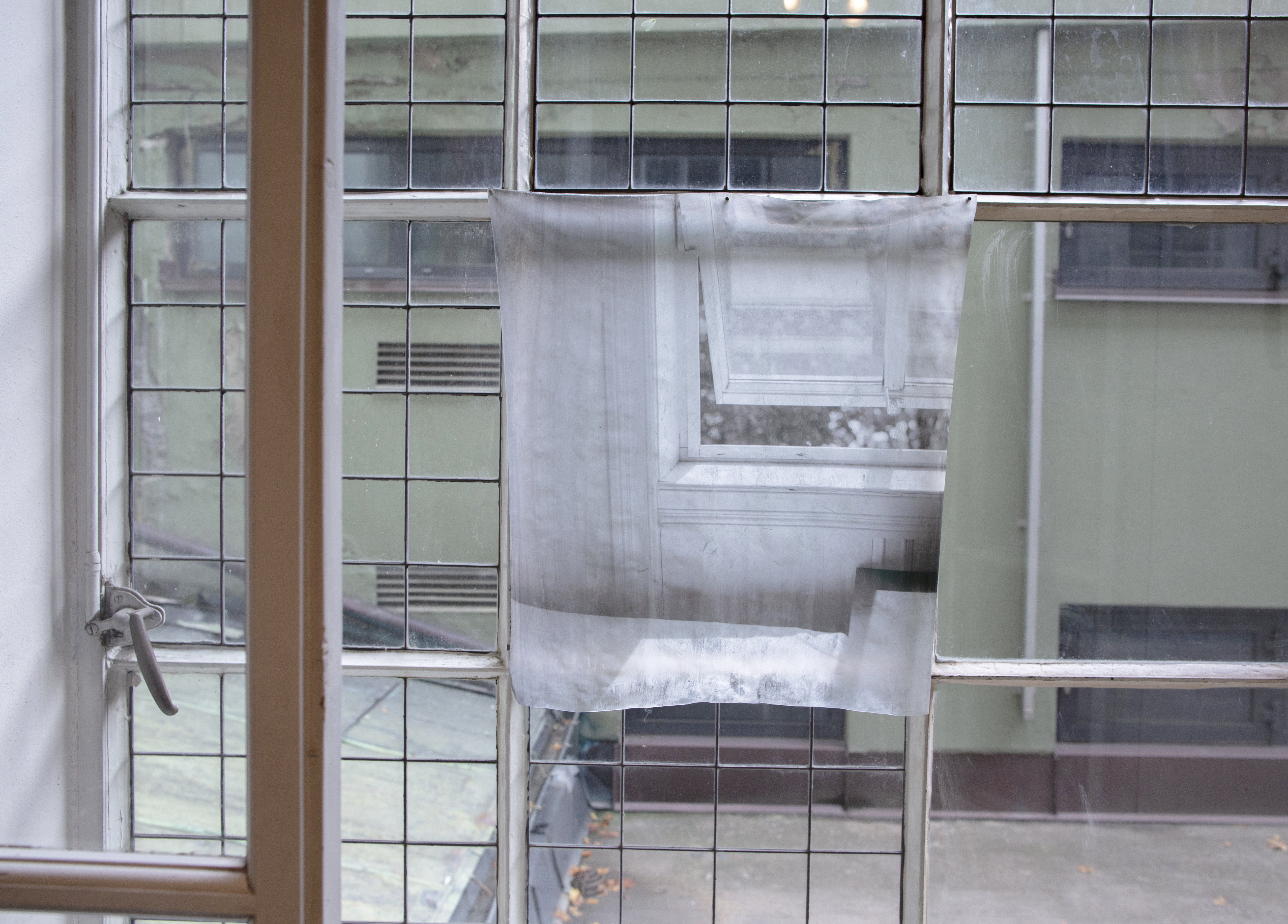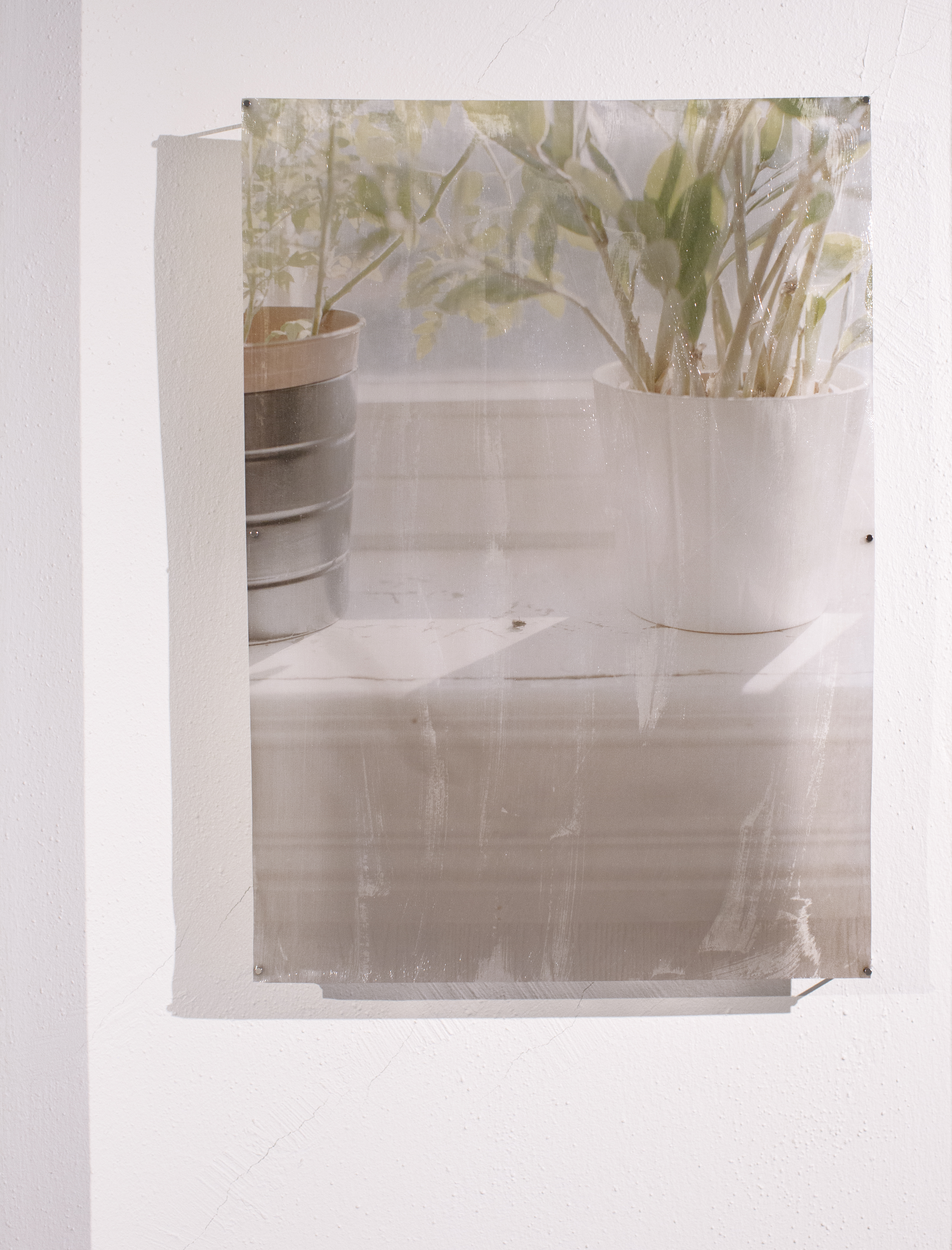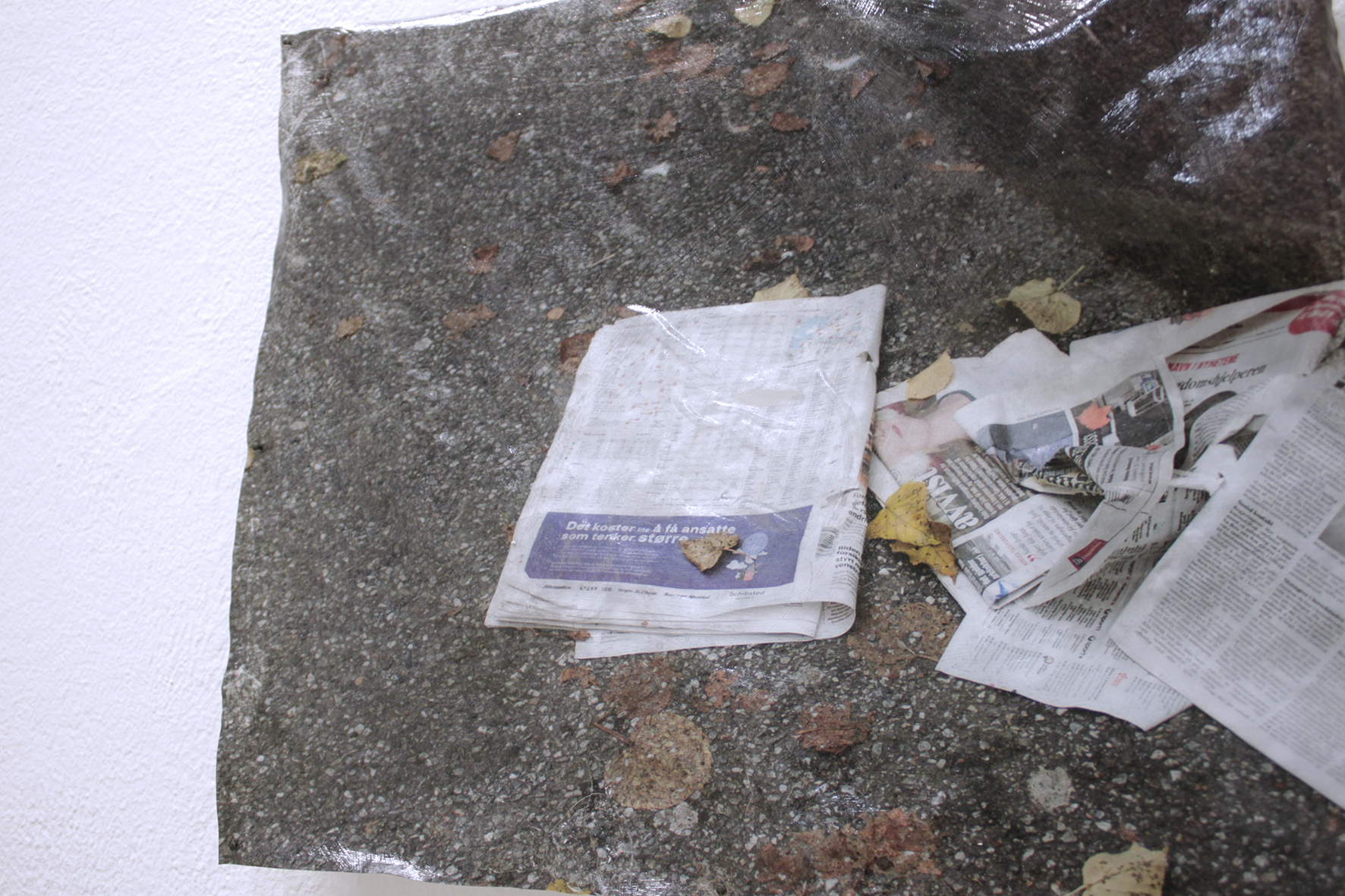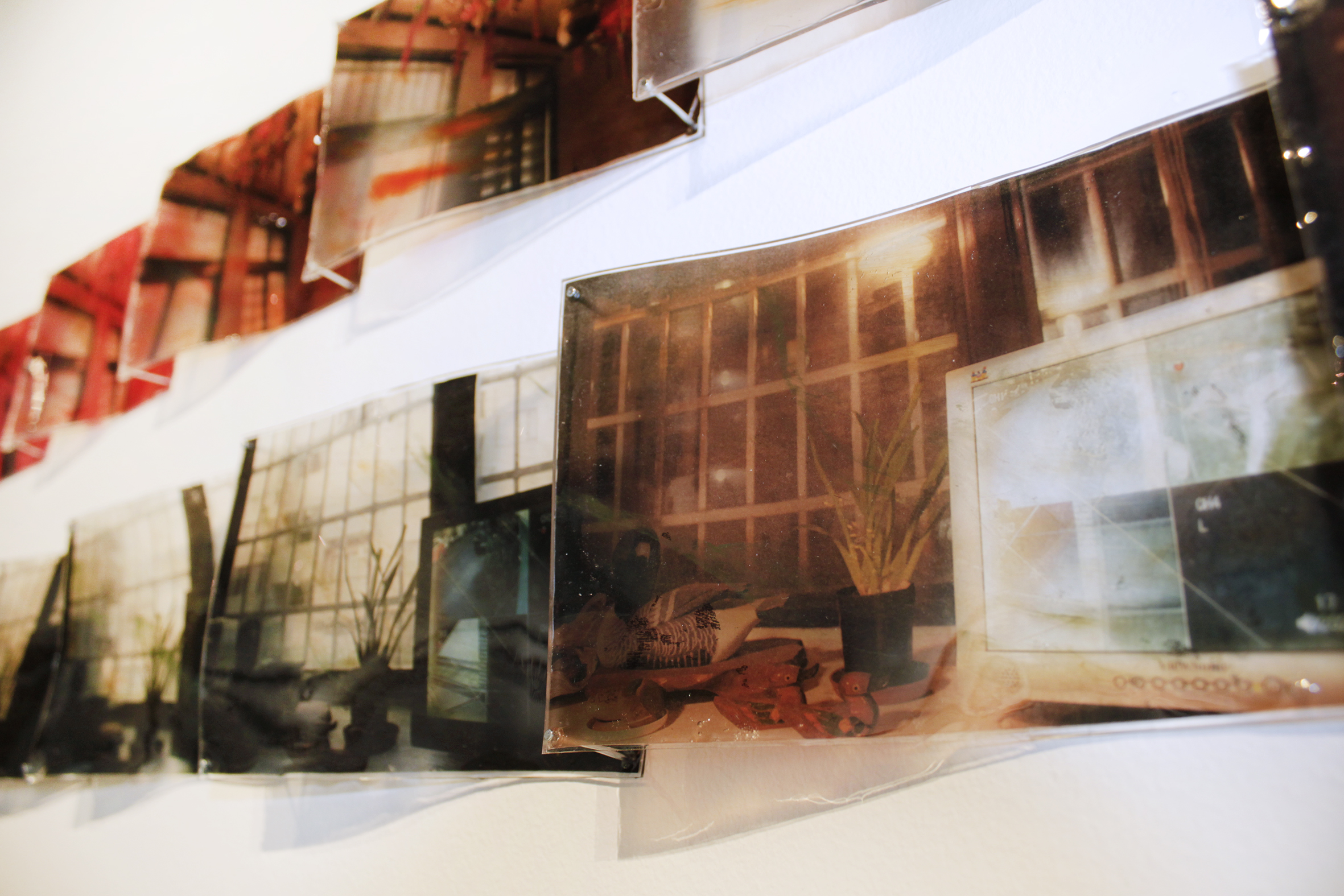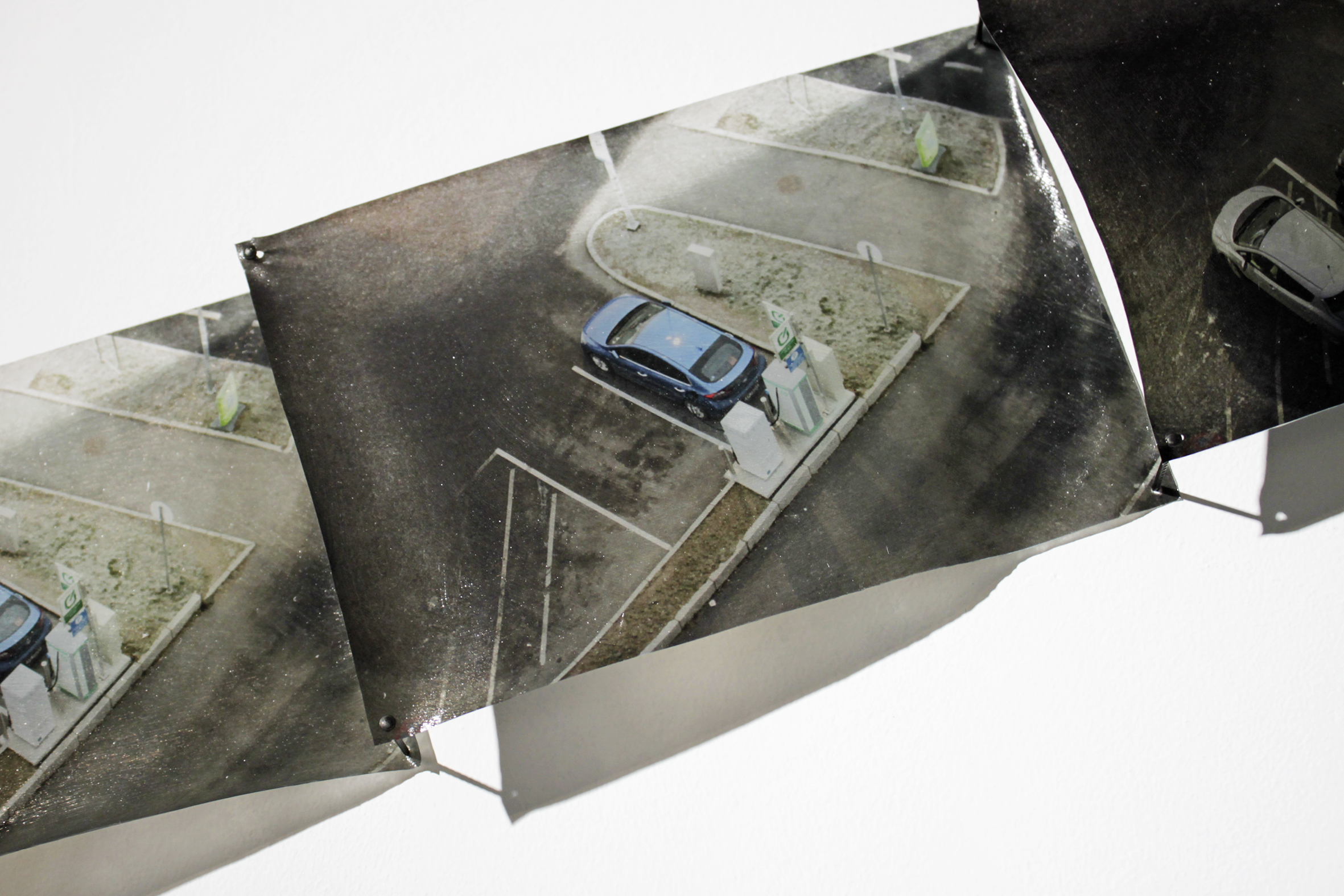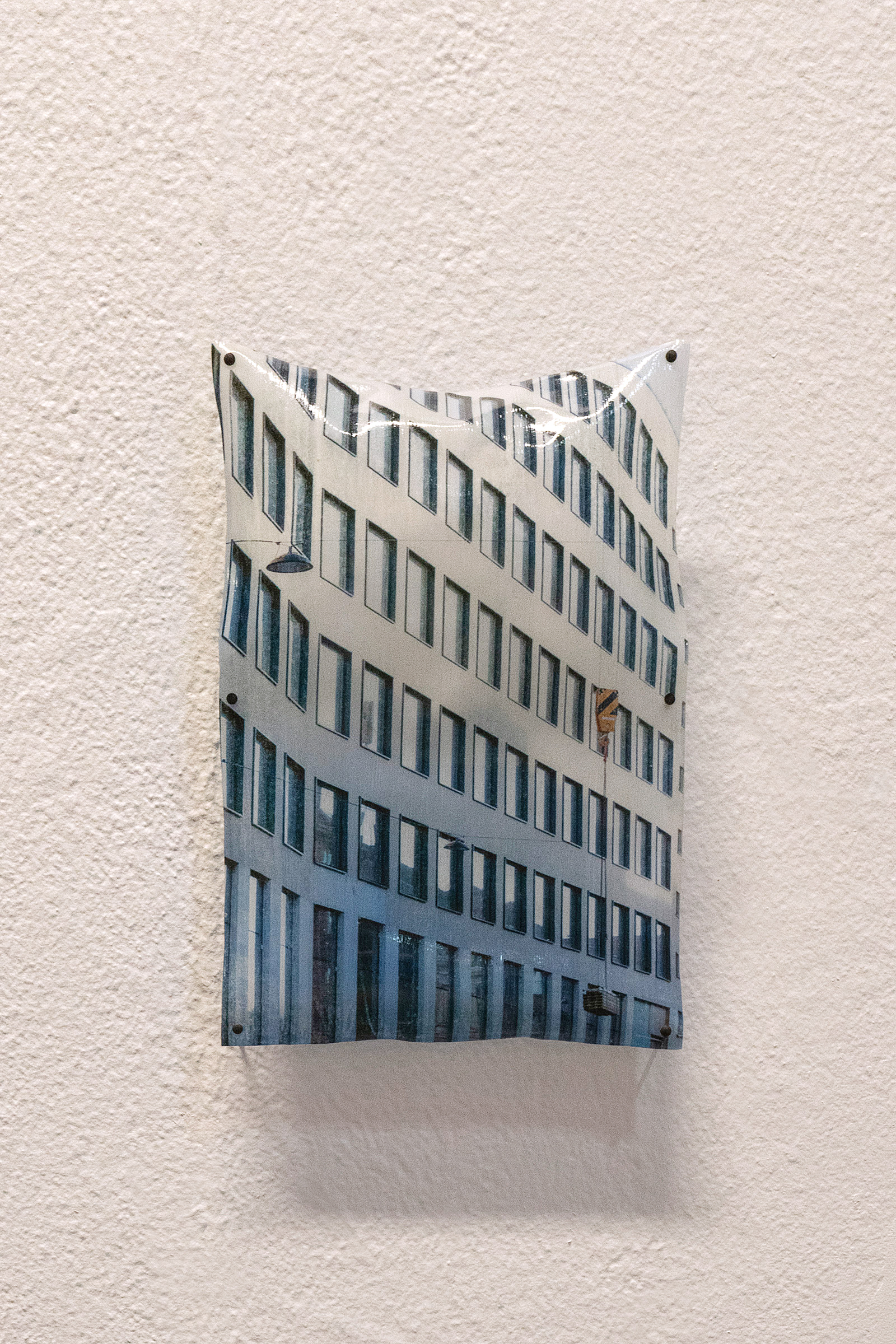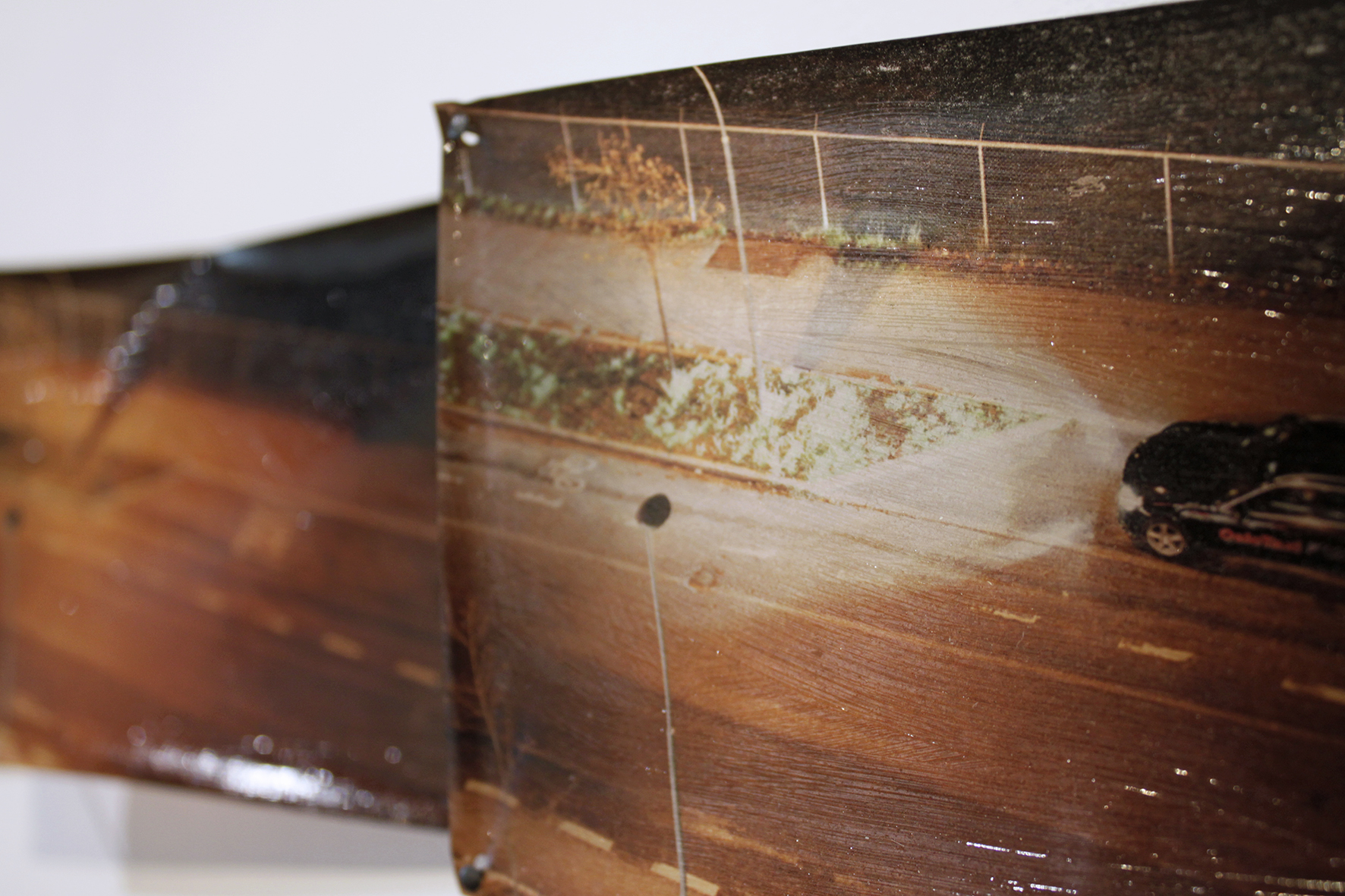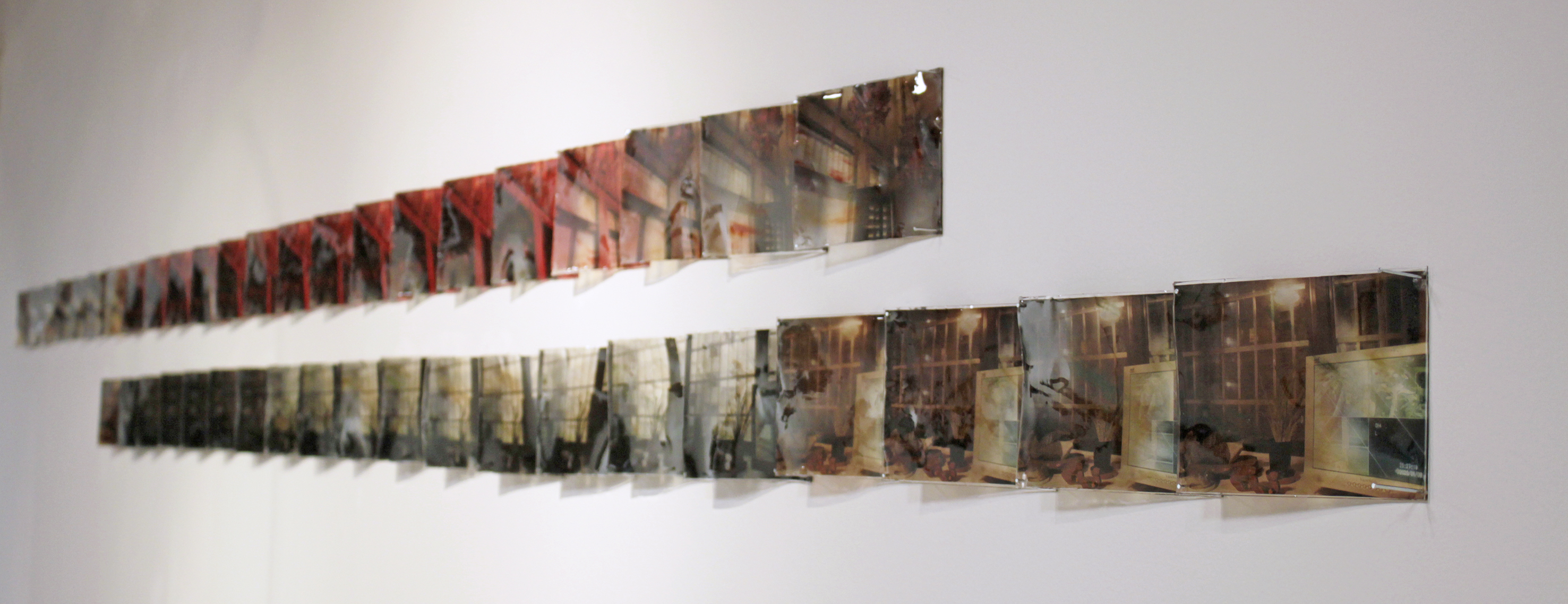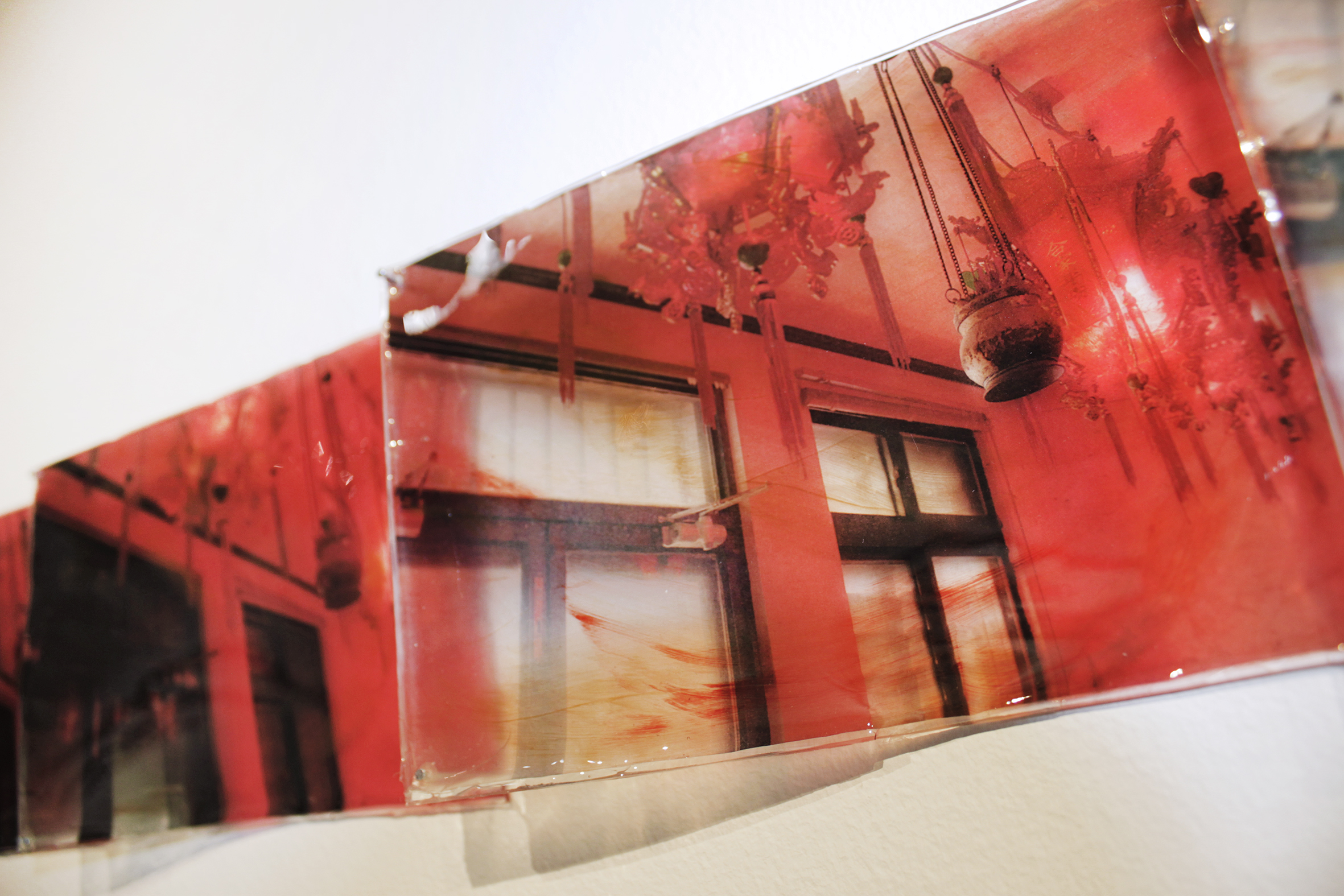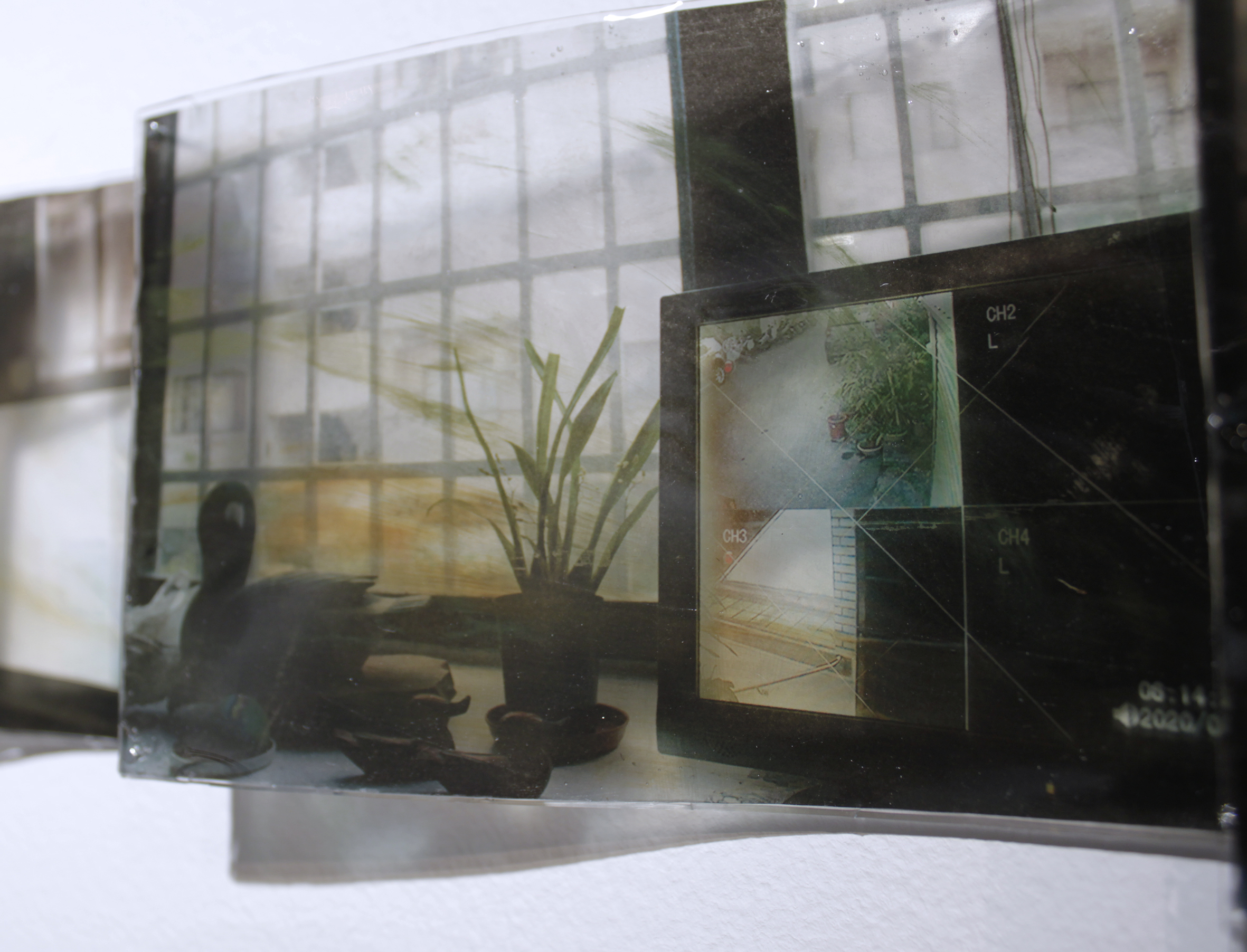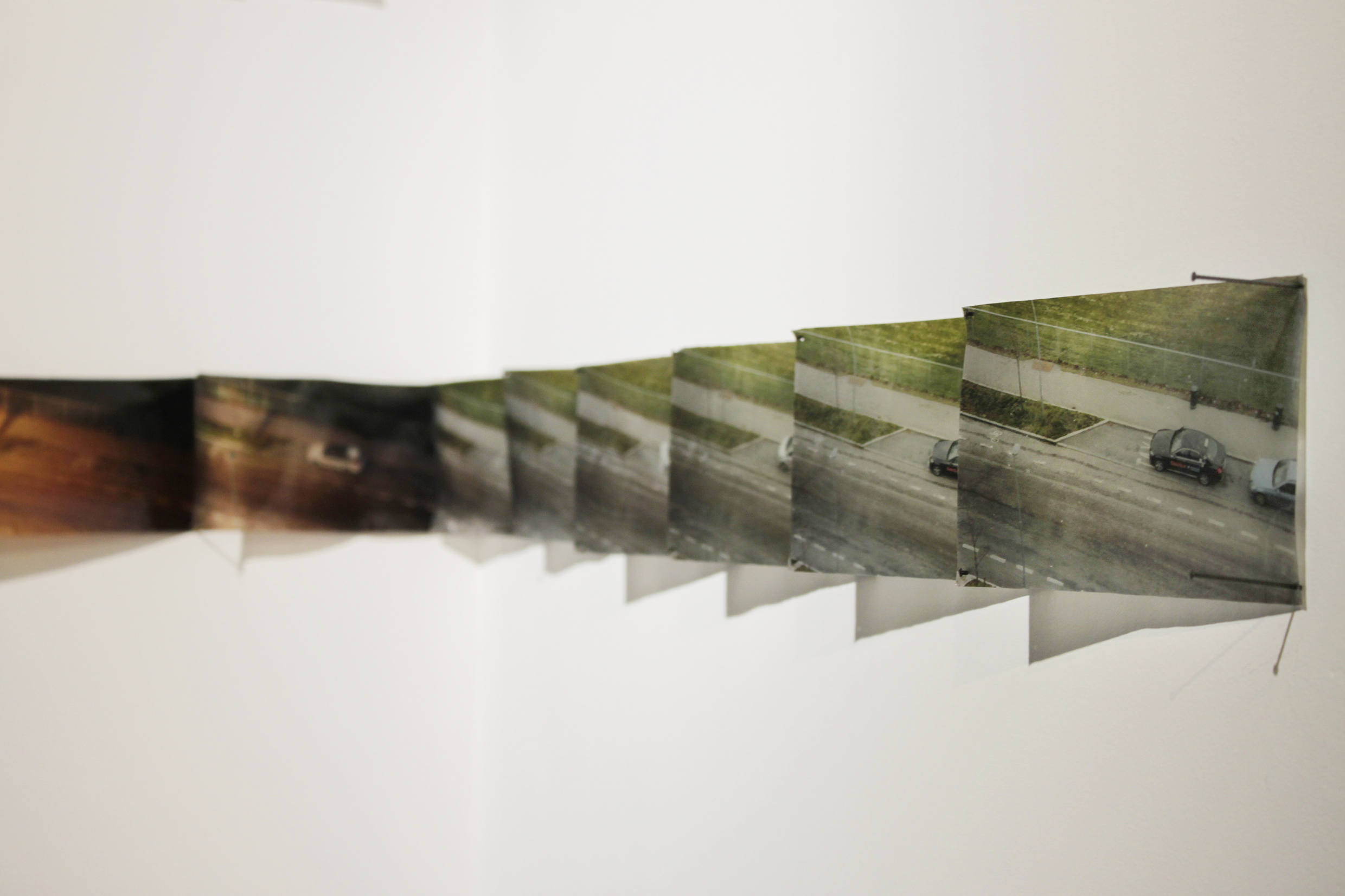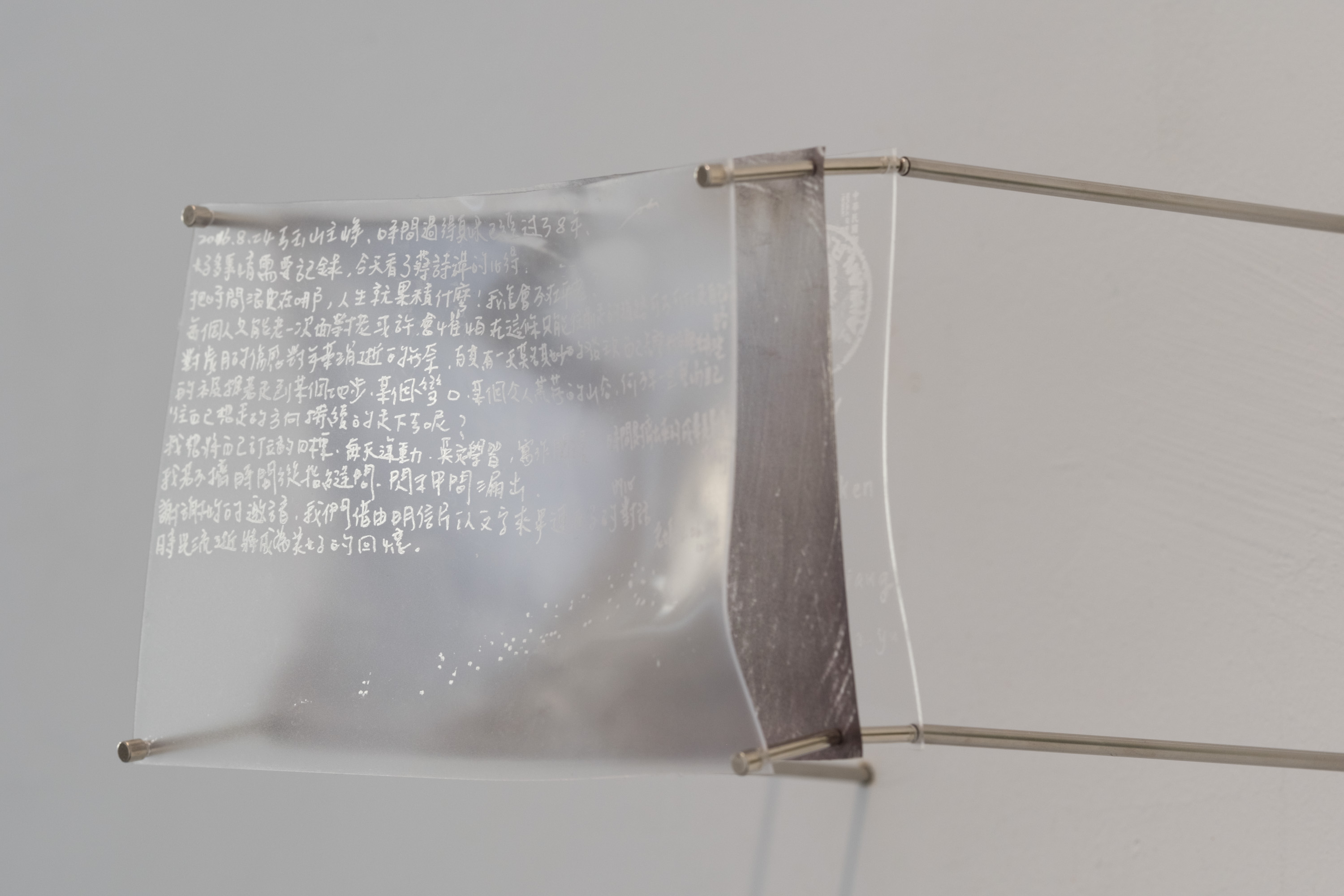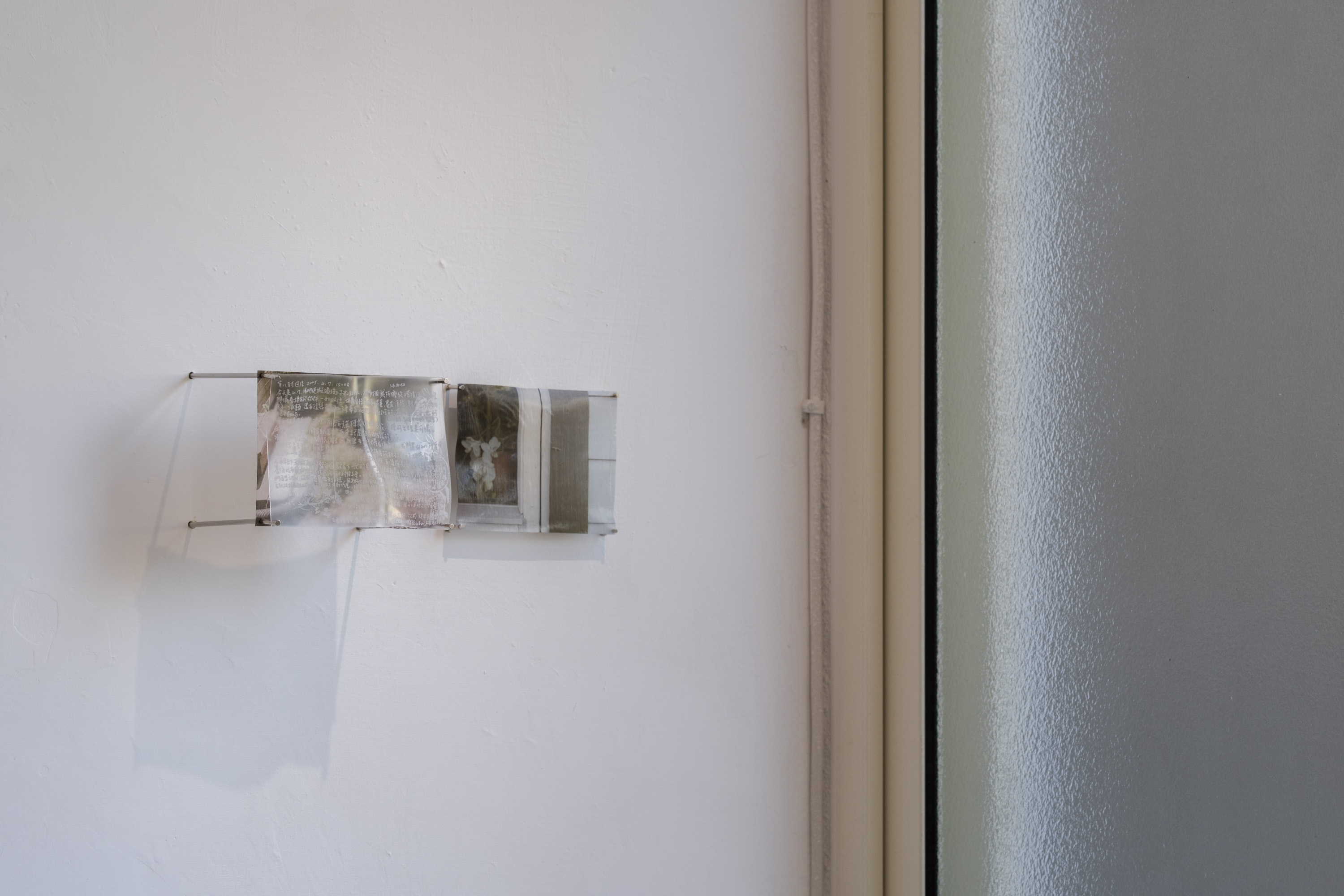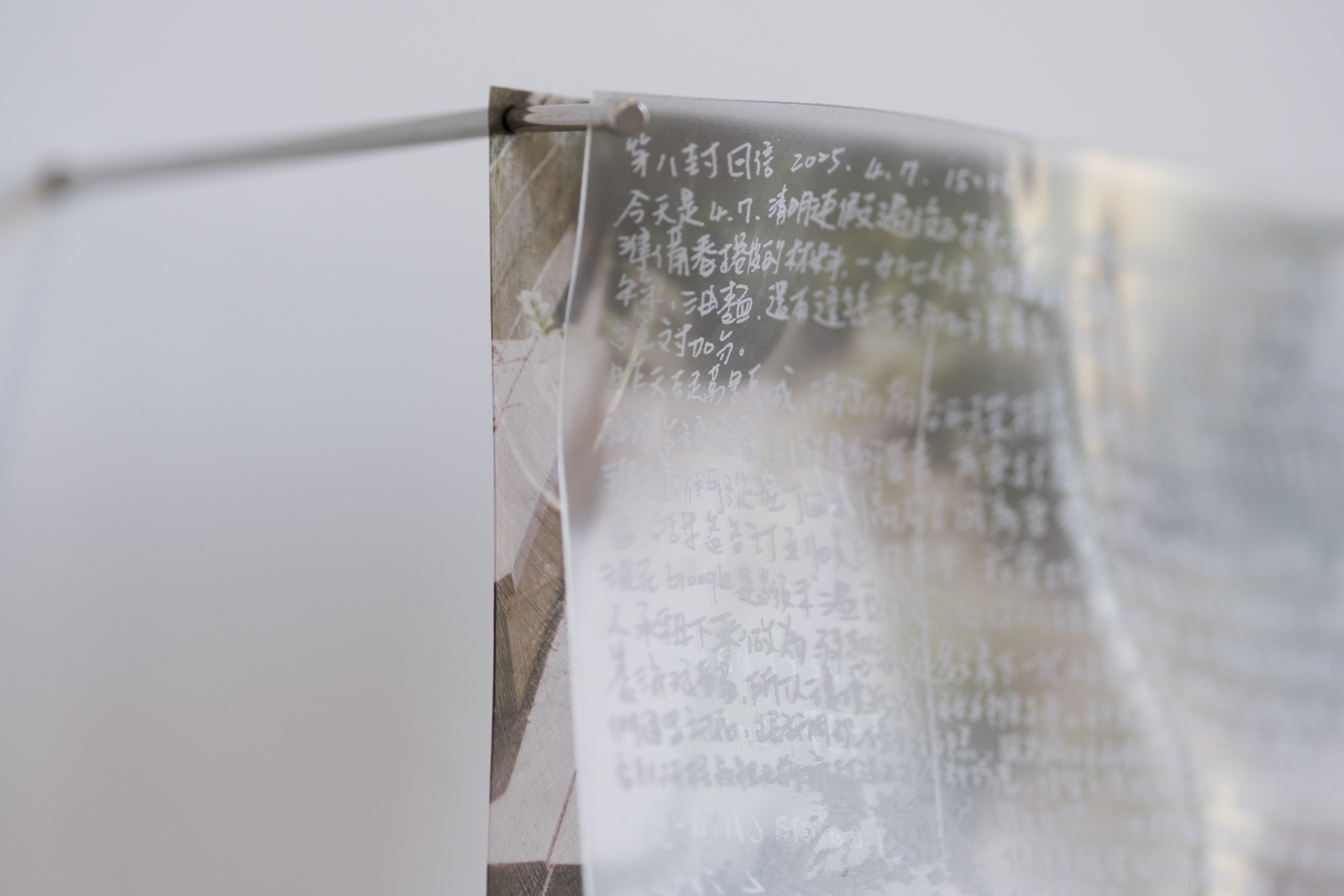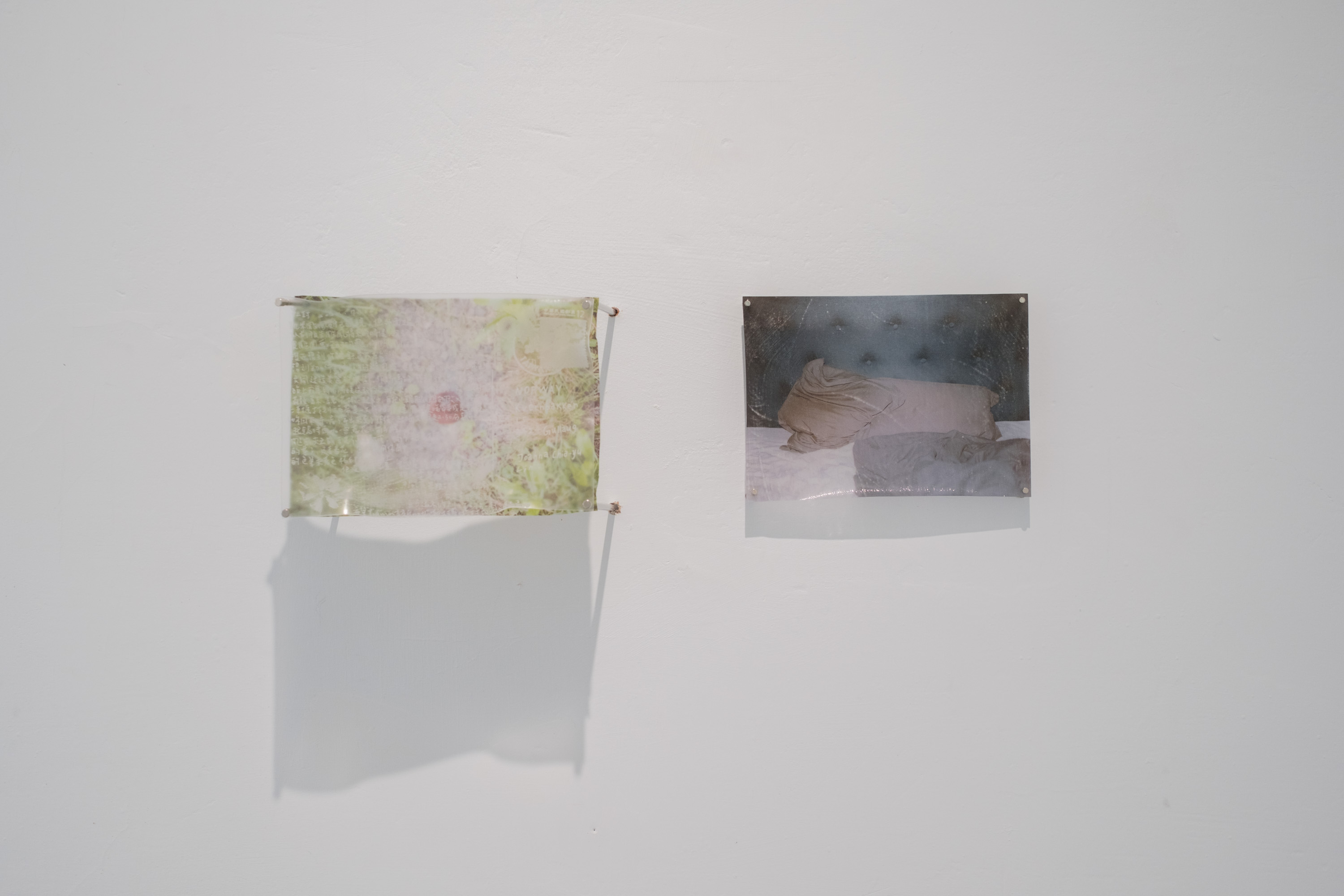2025
︎︎︎ As the Crow Flies
︎︎︎︎︎︎ The Weight that Holds (from Afar)︎︎︎︎︎︎ Family Album
︎︎︎︎︎︎ 8800 km, 14 Postcards
(Until the Day She Arrives)
︎︎︎︎︎︎ 2023.02–2024.02–2024.06
2024
︎︎︎ From Far Away
︎︎︎︎︎︎ I Was Trying to Find Traces of You︎︎︎︎︎︎ Postcard Edition
2023
︎︎︎ From Far Away
︎︎︎︎︎︎ Sun Faded Snowy mountain, Packaging Tape and 1093 Days Apart ︎︎︎︎︎︎ No window, 3 pm, and Bird Dropping /Angled Sunlight and Safety Net / Everything Good Is Always Somewhere Else2022
︎︎︎ Behind the Frosted Glass
2021
︎︎︎ It’s Not Far Away
2020
︎︎︎ Waiting
︎︎︎ Time Practices: Calendar
︎︎︎ Time Practices: 060420-070420, intvl.23’
︎︎︎ Time Practices: Burning Incense
︎︎︎ Time Practices: Securit Camera
︎︎︎ Time Practices:
Through a 12th-FloorWindow - Taxi, intlv.24’︎︎︎ Time Practices:
Through a 12th-Floor Window -Fortum Quick, intvl.36'2019
︎︎︎ Time Practices: Twig
︎︎︎ Time Practices: 8 Hours
︎︎︎ Untitled w/ Miao Sun
︎︎︎︎︎︎ Before 2019 (Paintings)
Part of From Far Away (Ongoing)
* From Far Away is a series of process-based works, adaptable to different contexts with varied selections from the series.
I Was Trying to Find Traces of You
2024
Acrylic medium, inkjet print pigment, magnets and plexiglass
Various size
This series is about loss and what happened after.
This series of images were taken earlier this year, during the week between my maternal grandmother's admission to the ICU and her passing. Having only seen her briefly in the three years since her colon cancer diagnosis, I found myself desperately searching for traces of her, realizing I had been absent through her illness and present only at its end.
These photos are far from perfect by any standard—they're riddled with mistakes, a collection of failures: underexposure, incorrect ISO settings, the wrong film, and slow shutter speeds. However, these imperfections mirror my mental state at that time. I struggled to document the moment properly; with my less-than-intuitive photography skills, these images became the few clues I clung to before everything slipped away.
Alongside these flawed images are other glimpses of her life: a piled of hats, marking her hair loss from chemotherapy; a basin with a toothbrush, prepared for her journey in the afterlife, as is tradition in Taiwan; her dressing table, half-emptied, with a few of her belongings left behind.
Probably it is more than loss —it captures the raw experience of navigating between worlds as a migrant and granddaughter, pulled between where I’m building my life and where my roots remain. While deeply personal, it resonates with the broader migrant experience.
Created with a self-developed technique, these images are transferred onto layers of dried paint, becoming fragmented and distorted—like memories themselves. Mounted on custom-made plexiglass strips, these pieces aren’t just images; they’re tactile objects, embodying the fleeting, untouchable nature of memory.
* This work was exhibited at Oslo Negativ 2024, Den gamle Veterinærhøgskolen, Oslo.
* From Far Away is a series of process-based works, adaptable to different contexts with varied selections from the series.
I Was Trying to Find Traces of You
2024
Acrylic medium, inkjet print pigment, magnets and plexiglass
Various size
This series is about loss and what happened after.
This series of images were taken earlier this year, during the week between my maternal grandmother's admission to the ICU and her passing. Having only seen her briefly in the three years since her colon cancer diagnosis, I found myself desperately searching for traces of her, realizing I had been absent through her illness and present only at its end.
These photos are far from perfect by any standard—they're riddled with mistakes, a collection of failures: underexposure, incorrect ISO settings, the wrong film, and slow shutter speeds. However, these imperfections mirror my mental state at that time. I struggled to document the moment properly; with my less-than-intuitive photography skills, these images became the few clues I clung to before everything slipped away.
Alongside these flawed images are other glimpses of her life: a piled of hats, marking her hair loss from chemotherapy; a basin with a toothbrush, prepared for her journey in the afterlife, as is tradition in Taiwan; her dressing table, half-emptied, with a few of her belongings left behind.
Probably it is more than loss —it captures the raw experience of navigating between worlds as a migrant and granddaughter, pulled between where I’m building my life and where my roots remain. While deeply personal, it resonates with the broader migrant experience.
Created with a self-developed technique, these images are transferred onto layers of dried paint, becoming fragmented and distorted—like memories themselves. Mounted on custom-made plexiglass strips, these pieces aren’t just images; they’re tactile objects, embodying the fleeting, untouchable nature of memory.
* This work was exhibited at Oslo Negativ 2024, Den gamle Veterinærhøgskolen, Oslo.
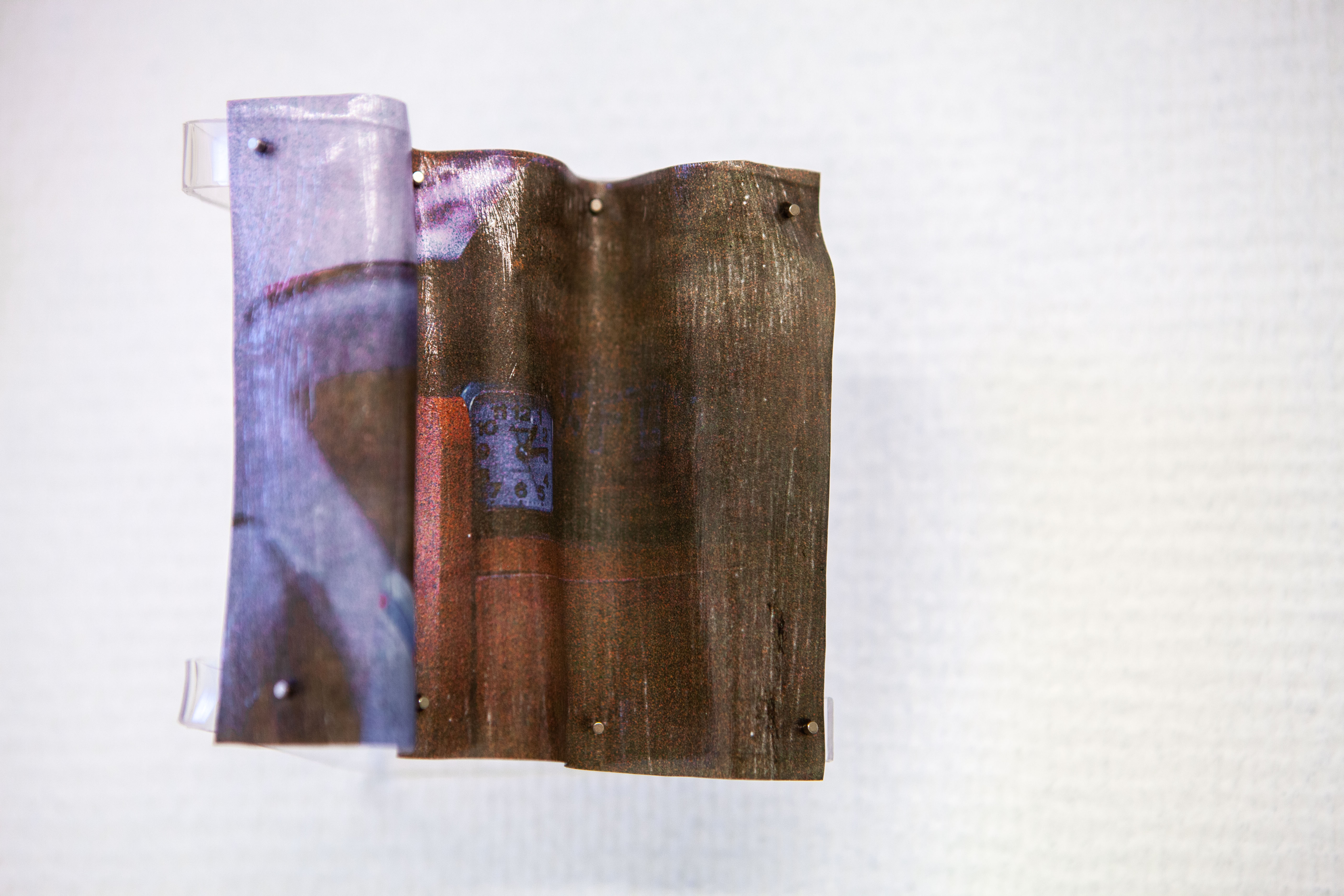
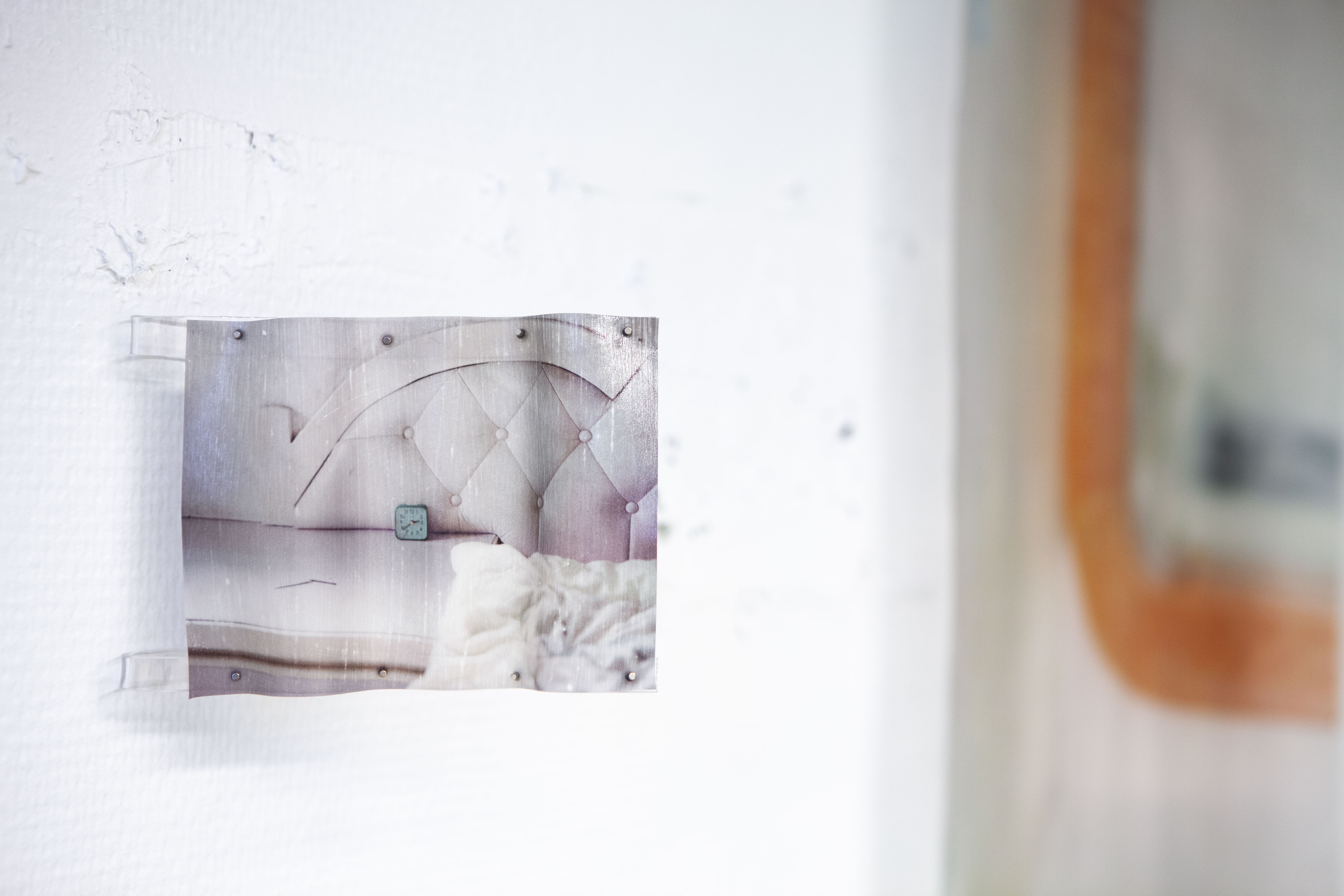

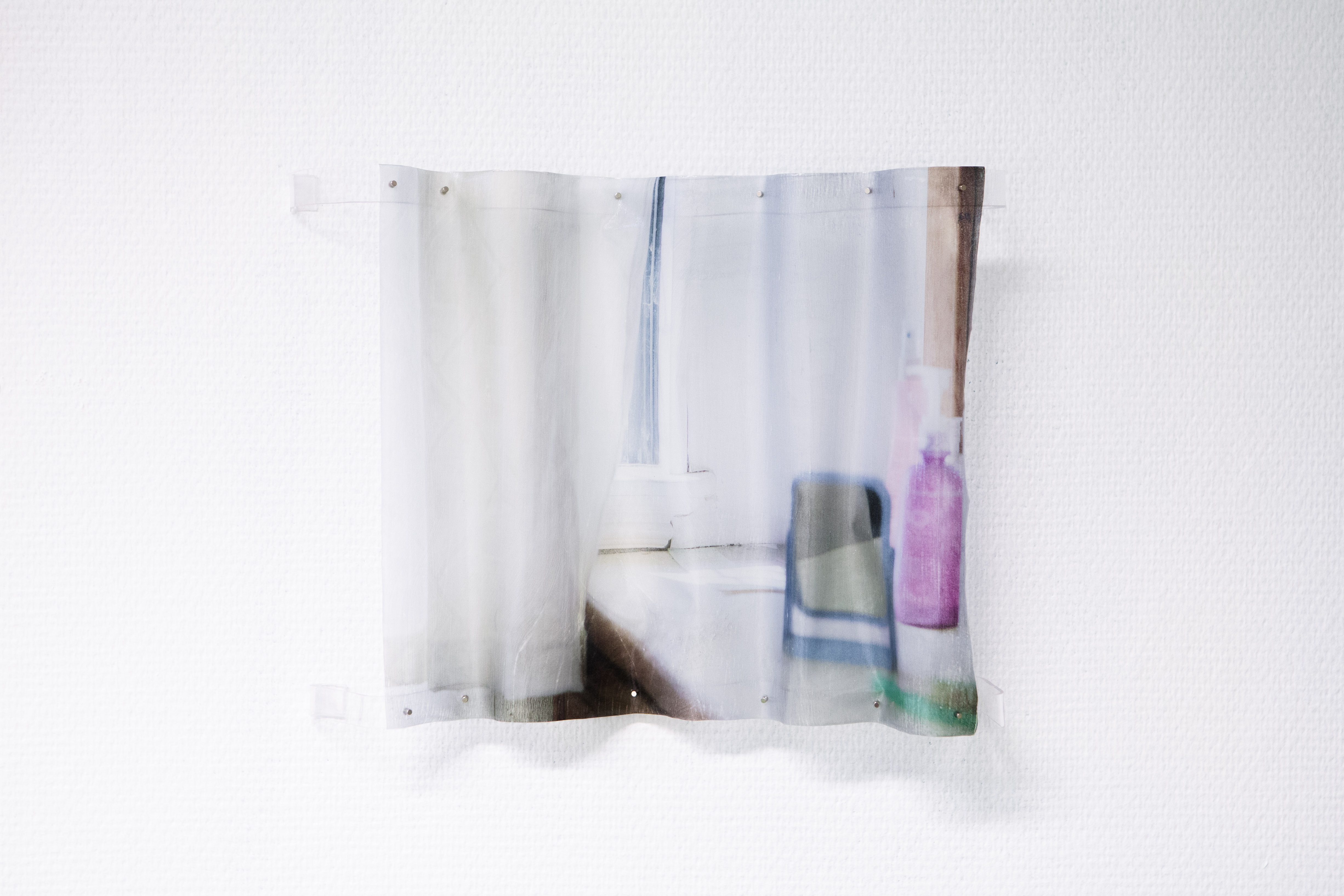
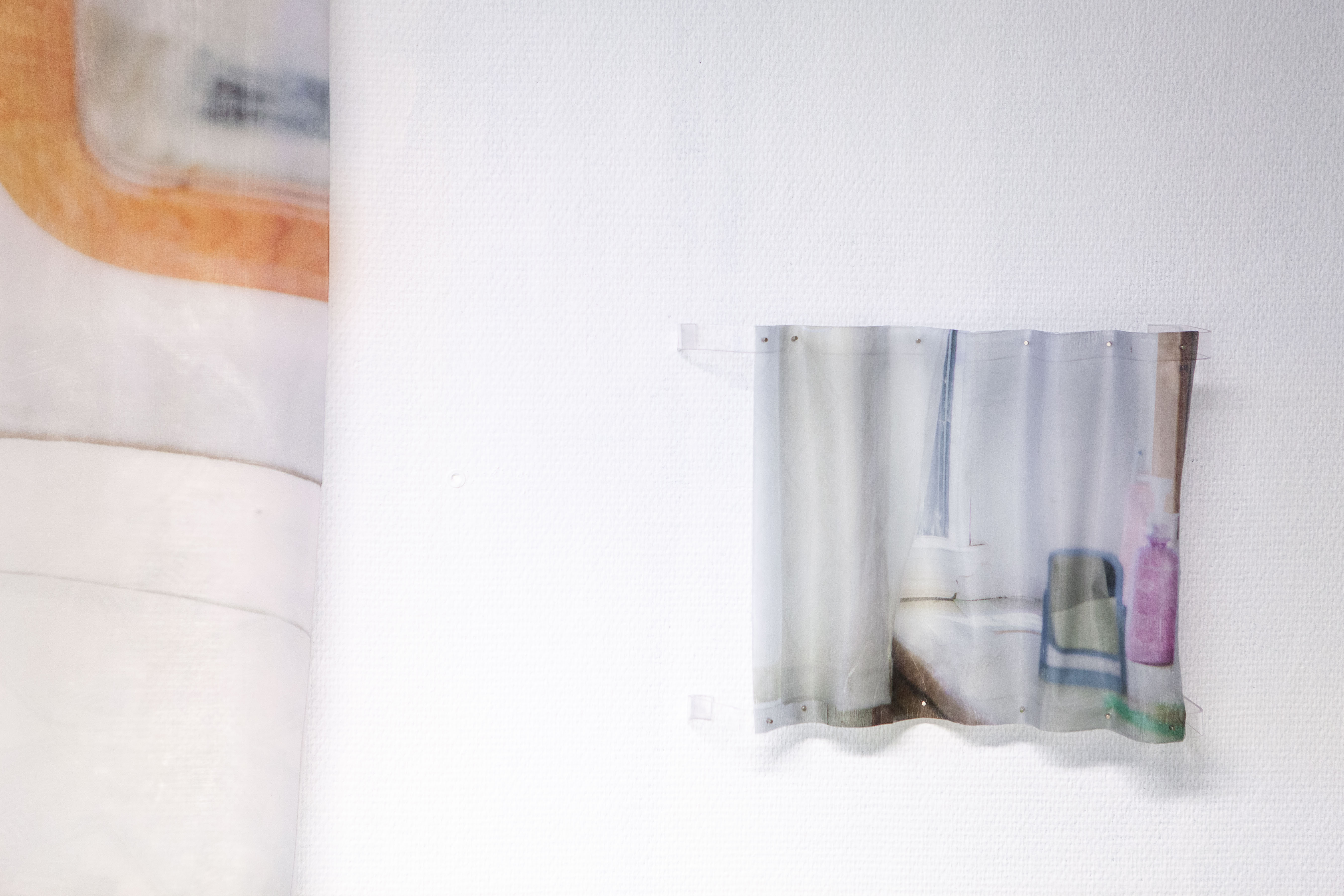
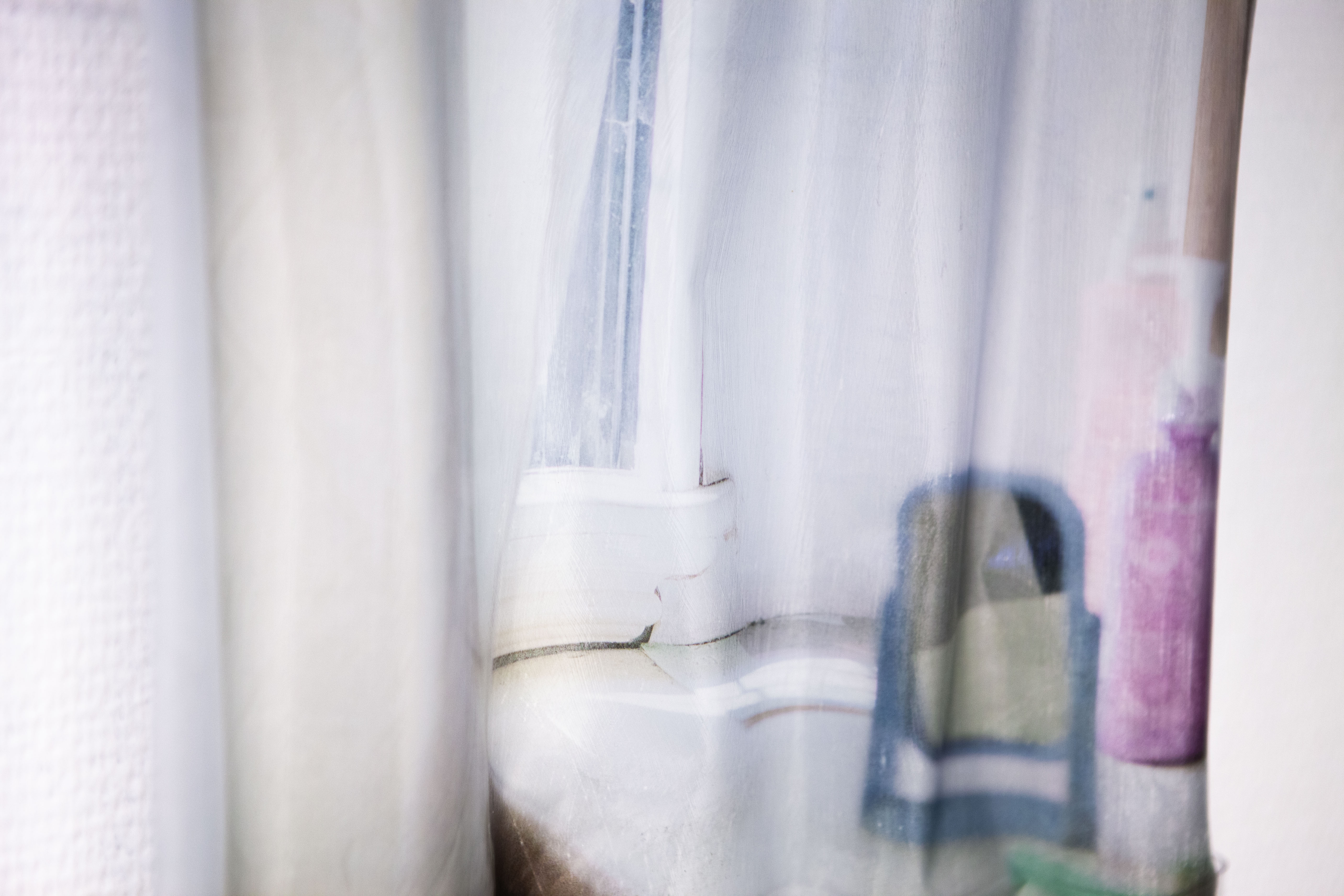
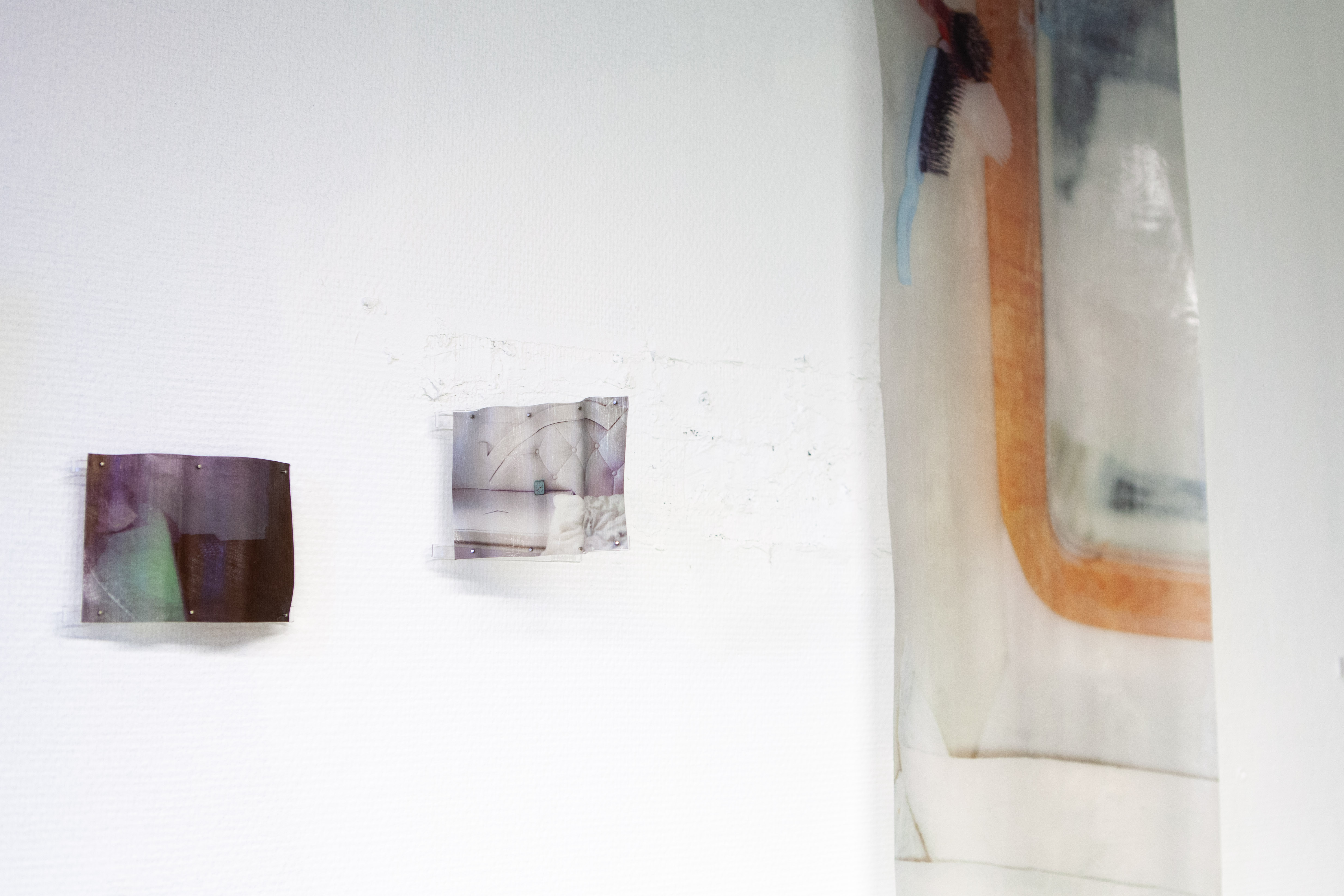
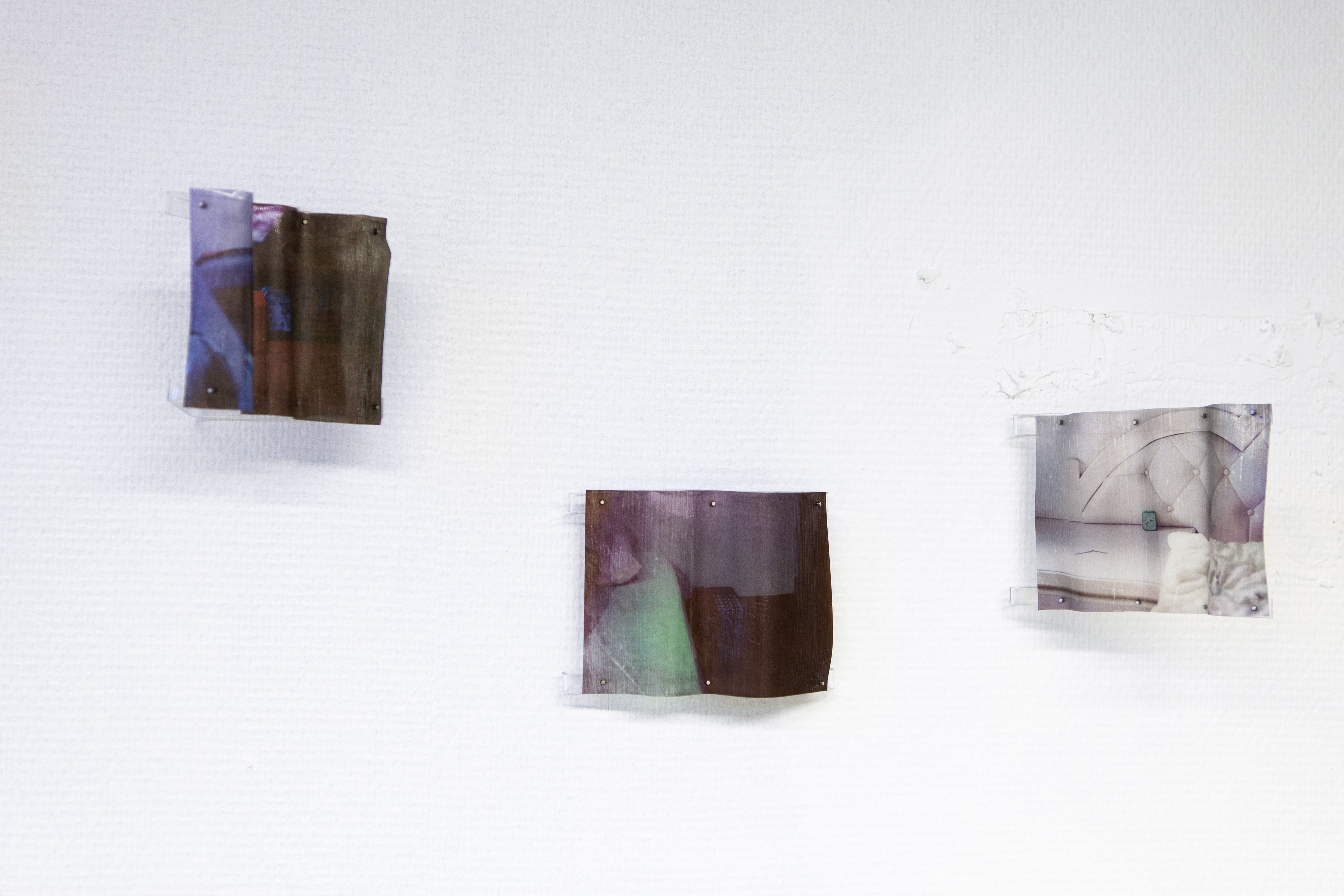
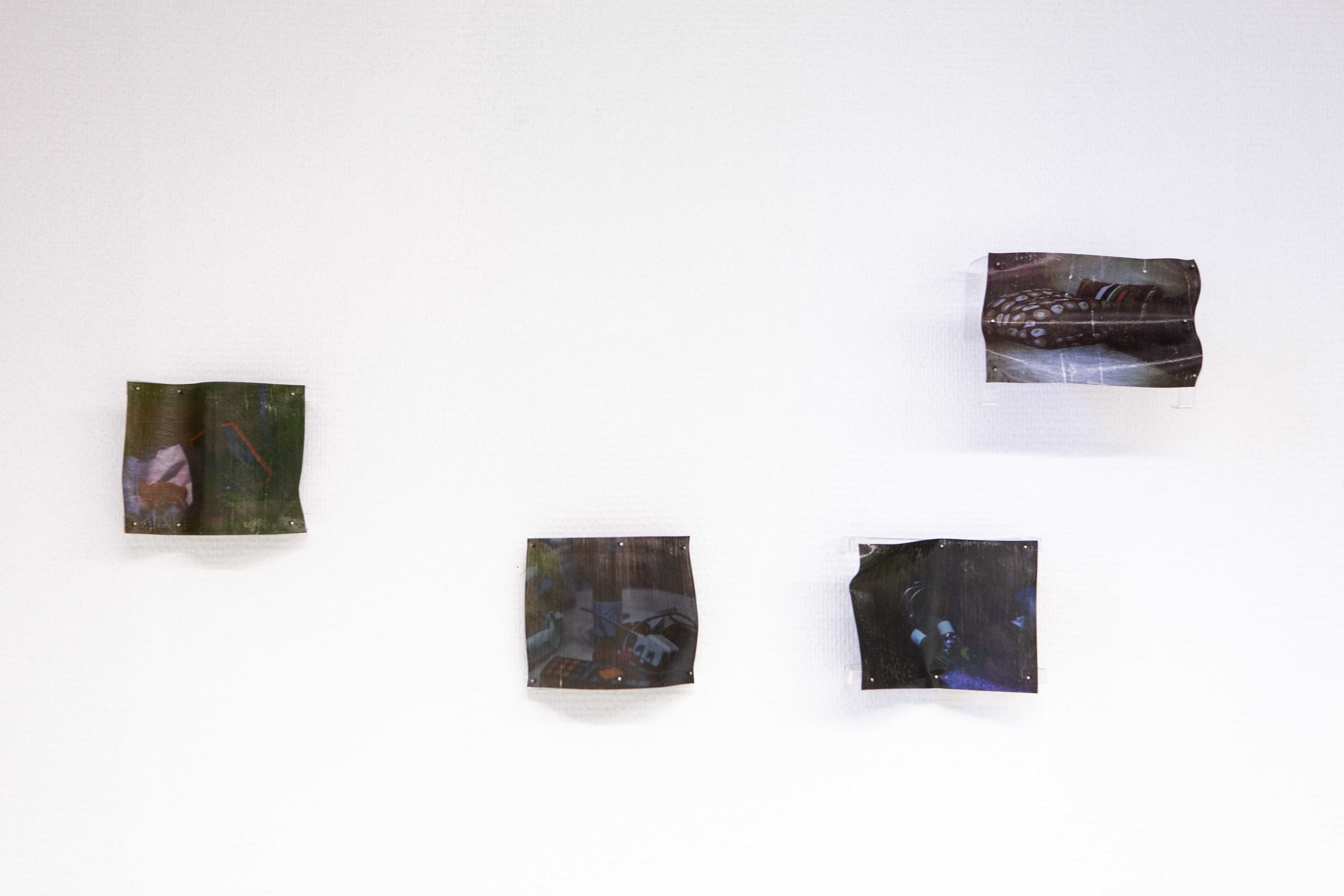
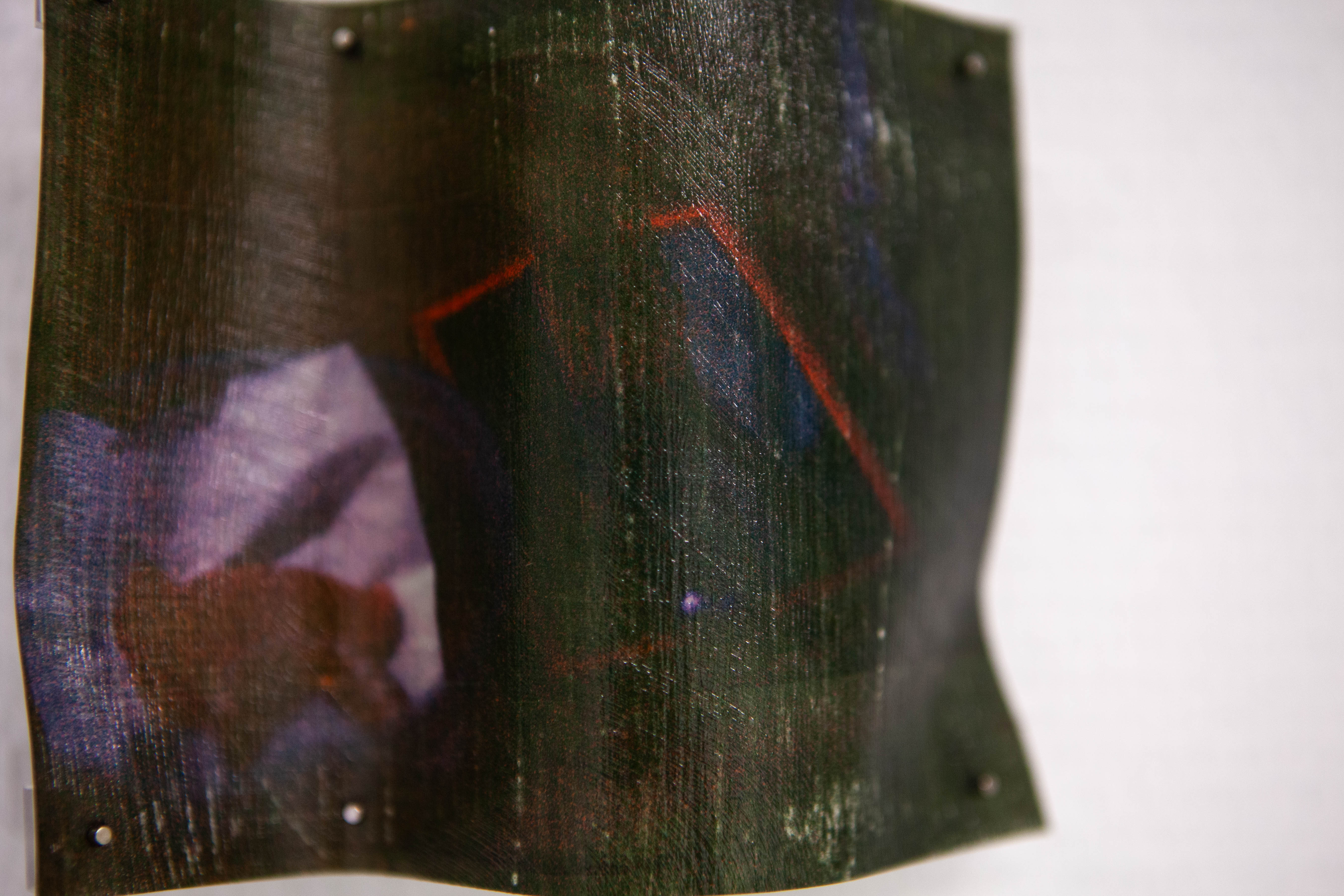
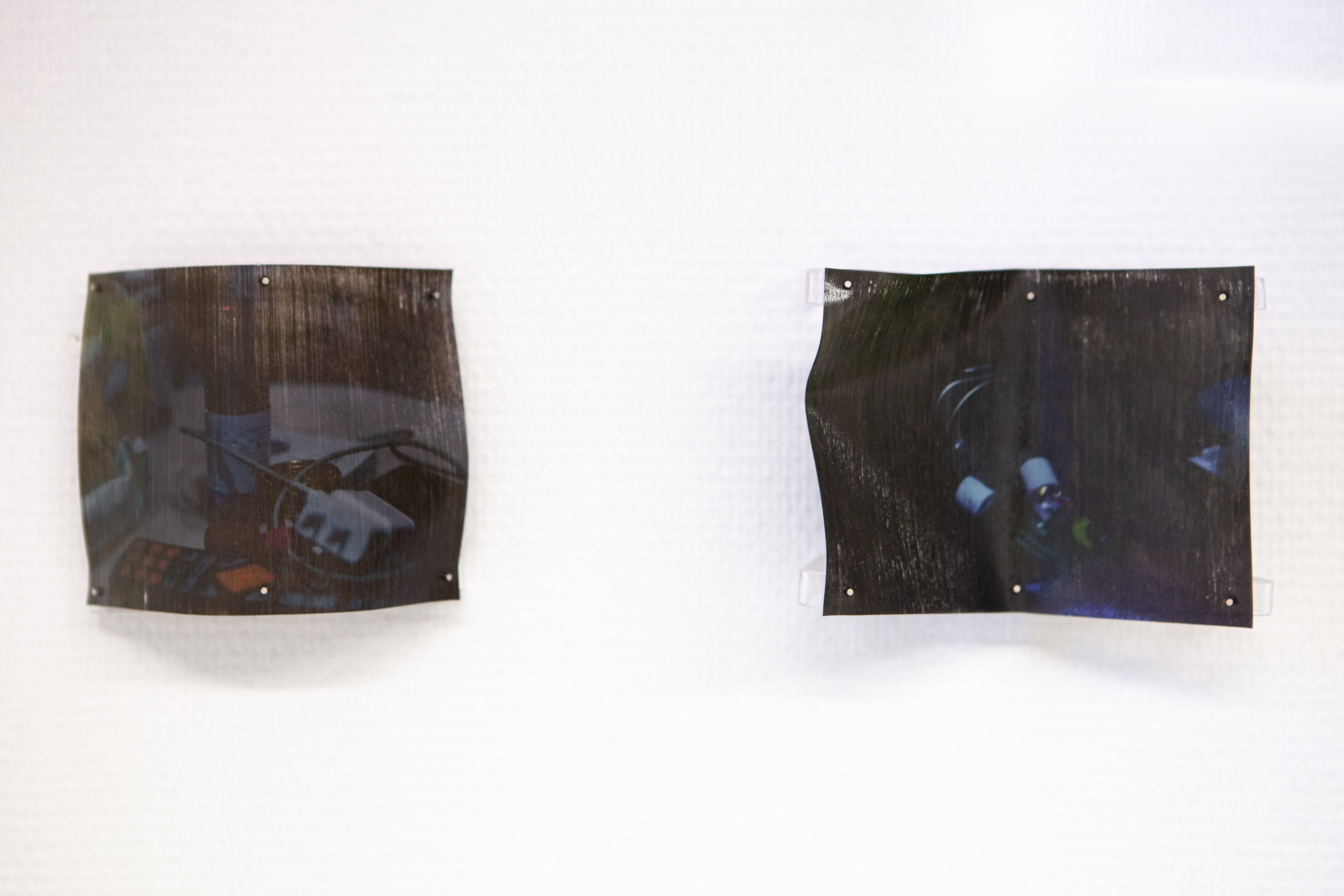


2023.02–2024.02–2024.06
2024/2025
Acrylic medium, inkjet print pigment, magnets, plexiglass mirrors, UV varnish and
hand-bant plexiglass mount with a laser-engraved work number
&
Curtains and spoken words.
Arrangememnts according to the site, 211 pieces.
As part of As the Crow Flies
2023.02–2024.02–2024.06 forms the starting point of As the Crow Flies.
This body of work includes around 200 postcard-sized photo-sculptures in varying forms. By presenting scenes once part of daily life in the format of postcards, objects light enough to carry for a “visitor” like myself, it develops a language that feels both familiar and estranged. These memories flicker like camera flashes: brief, sharp, and uncertain.
As the Crow Flies expands from this series into an interdisciplinary installation, blending photography, painting, textiles, and sound. Drawing on the phrase “as the crow flies,” which refers to the most direct path between two points, the work builds on 2023 series From Far Away. It traces the shifting meanings of place and home, exploring the emotional and temporal dimensions of distance and the experience of moving between worlds.
At its core are the more than 200 soft photographic sculptures, made through a self-developed technique combining photography, painting, textiles, and industrial materials. Their contrasting textures create an interplay between softness and structure. A soundscape of spoken words in Norwegian, together with textile backdrops, extends the installation’s narrative, inviting viewers to move through the work and reflect on the connections between its mediums.
*As the Crow Flies was reviewed on Kunstkritikk:
︎︎︎ Bilder på Flukt, by Stian Gabrielsen.
* This work was exhibited at Tenthaus, Oslo, in 2025.
*The exhibition is supported by Tenthaus, Kunstsentrene i Norge (KiN), Kulturrådet and Norsk Fotografisk Fond (Nofofo, Forbundet Frie Fotografer).
2024/2025
Acrylic medium, inkjet print pigment, magnets, plexiglass mirrors, UV varnish and
hand-bant plexiglass mount with a laser-engraved work number
&
Curtains and spoken words.
Arrangememnts according to the site, 211 pieces.
As part of As the Crow Flies
2023.02–2024.02–2024.06 forms the starting point of As the Crow Flies.
This body of work includes around 200 postcard-sized photo-sculptures in varying forms. By presenting scenes once part of daily life in the format of postcards, objects light enough to carry for a “visitor” like myself, it develops a language that feels both familiar and estranged. These memories flicker like camera flashes: brief, sharp, and uncertain.
As the Crow Flies expands from this series into an interdisciplinary installation, blending photography, painting, textiles, and sound. Drawing on the phrase “as the crow flies,” which refers to the most direct path between two points, the work builds on 2023 series From Far Away. It traces the shifting meanings of place and home, exploring the emotional and temporal dimensions of distance and the experience of moving between worlds.
At its core are the more than 200 soft photographic sculptures, made through a self-developed technique combining photography, painting, textiles, and industrial materials. Their contrasting textures create an interplay between softness and structure. A soundscape of spoken words in Norwegian, together with textile backdrops, extends the installation’s narrative, inviting viewers to move through the work and reflect on the connections between its mediums.
*As the Crow Flies was reviewed on Kunstkritikk:
︎︎︎ Bilder på Flukt, by Stian Gabrielsen.
* This work was exhibited at Tenthaus, Oslo, in 2025.
*The exhibition is supported by Tenthaus, Kunstsentrene i Norge (KiN), Kulturrådet and Norsk Fotografisk Fond (Nofofo, Forbundet Frie Fotografer).








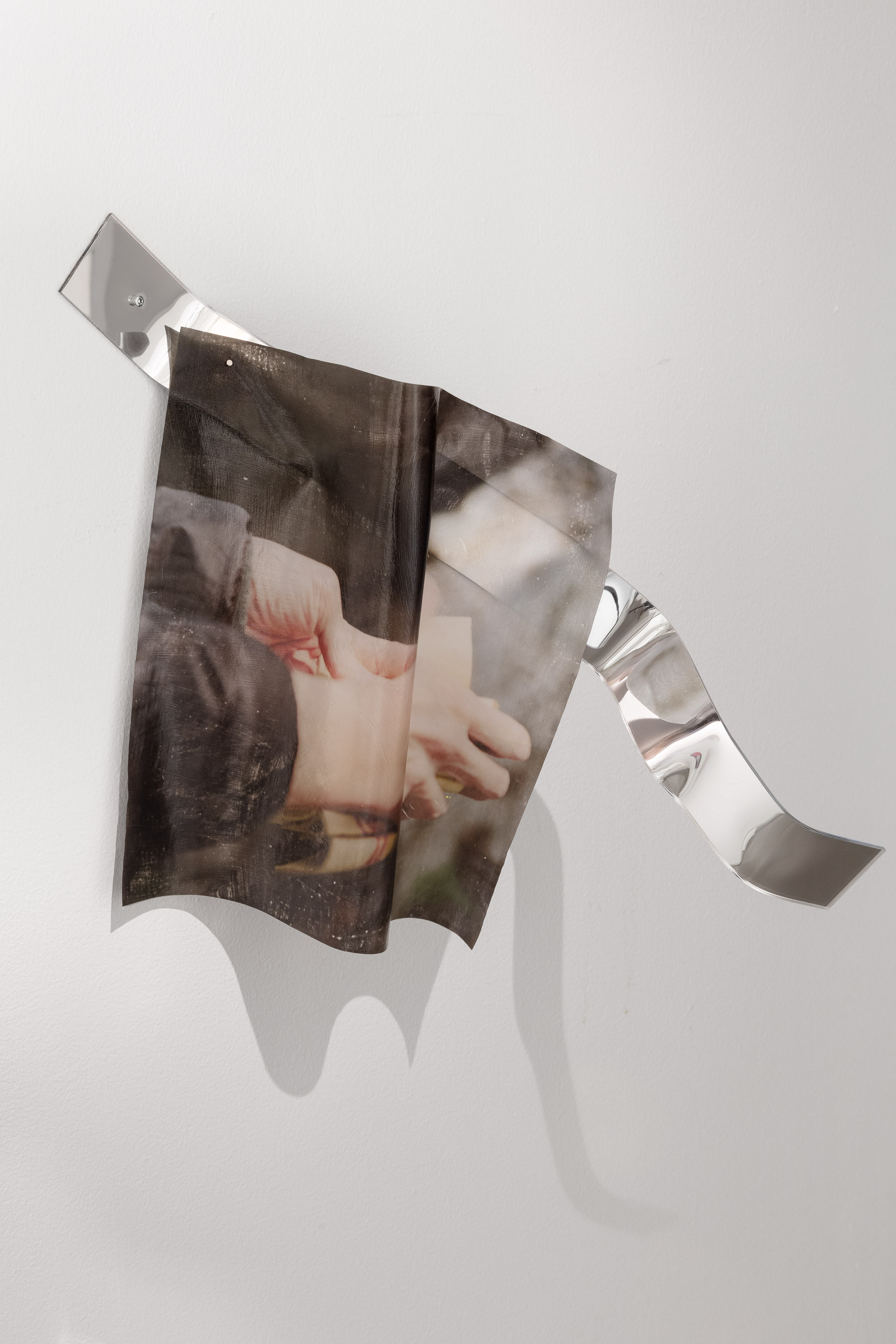














Exhibition text
written by
Mechu Rapela
(Conversation partner and Tenthaus collective member)
(Conversation partner and Tenthaus collective member)
As the Crow Flies by Joanna Chia-yu Lin is an installation, blending sculpture, sound, and textiles to create a space where memory, identity, and cultural displacement intertwine. Rooted in the artist’s personal journey between Taiwan and Norway, the exhibition explores the complex emotional landscapes of migration, inviting viewers into a fragmented narrative of longing, belonging, and the spaces in between.
The works are presented in fragmented storytelling, resembling flashbacks that echo both personal and collective memory. Like flashes of light, these photographic sculptures capture fragments of a memory—vivid yet fleeting, melancholic yet resonant. They confront us with their dual nature: we see them as both snapshots of a past life and as reflections of the universal human experience. This interplay asks us to consider our role as viewers: Who are we in relation to these memories? We do not belong in them, but we recognize them.
These are not necessarily our temples, not our Taiwan, but we understand them. We know homes—whether they exist in our lives or in the shadow of their absence. Joanna’s works challenge us to confront our own attachments, or lack thereof, through hers. They speak to a deep, shared knowledge of what homes mean, what they should mean, and the ache of being tethered to spaces and memories that may no longer exist in the same way.
The exhibition captures this tension through its form. The photographs, sculptural elements, and soundscape are fragmented and layered, never giving us the full picture but offering glimpses that guide us through a journey. The soft photographic sculptures, crafted with dried paints and industrial materials, embody the duality of fragility and permanence. Their scale and placement—ranging from intimate, low pieces to towering, distant forms—shift our perspectives, evoking moments of childhood and adulthood, closeness and separation.
Curtains create barriers and frames, suggesting both the act of concealing and revealing. They transform the exhibition space into a physical metaphor for the emotional distance that migration creates. The soundscape—spoken memories in Norwegian—adds another layer, one of disconnection and translation, as language itself becomes a marker of identity and belonging.
In this memory exhibition, the flashbacks presented by Joanna are not complete narratives but fragments of her life. We encounter them as outsiders, yet their familiarity confronts us with our own histories and attachments. The interplay of perspectives—hers and ours—creates a dialogue, where we are simultaneously distant and intimate, estranged and connected.
Language, in As the Crow Flies, becomes more than a means of communication—it is a way of restructuring thoughts, knowledge, and memory. Spoken words in Norwegian, a language the artist has only recently learned, form a critical layer of the soundscape, reshaping the way memories are expressed and understood. Does the act of translating one’s history into a foreign language change its essence? Do these memories lose their sharpness, or does the unfamiliar tongue create distance that makes them hurt less?
These questions linger as the artist recounts family histories, transforming the deeply personal into something universal, making this a reflective journey that forces us to confront our attachments, and through it, we come to understand that the distance between memory and presence is one we all navigate.
Family Album
2024/2025
Acrylic medium, inkjet print pigment and stainless steel.
Arrangememnts according to the site, 4 sets of works, 13 pieces.
(Subtitles from Left to Right)
After Mormor’s passing, Yizhu, Taiwan, February and June 2024
123 x 155 cm
Window side, Yizhu and Lier, February and August 2024
99 x 155 cm
Mirrors and loved ones, Yizhu, Chiayi and Taichung, February and June 2024
123 x 155 cm
Our clusters, Yizhu, Chiayi, Taichung and Lier, February, June and August 2024
197 x 155 cm
Family Album is part of my long-term project As the Crow Flies, an interdisciplinary exploration of memory and shifting identities between places. The title, taken from the phrase "as the crow flies" (referring to the most direct path), reflects the emotional and temporal distances that influence the notion of home.
In this particular piece, I look into generational trauma, evolving identities, and the roles women play within family structures, focusing on four women in my family: my maternal grandmother, my paternal grandmother, my mother, and myself. It speaks of inherited narratives, personal choices, and the silent weight of unspoken expectations.
I photographed their dressing tables, the most intimate spaces in their lives. For my part, I photographed my working desk, where I, too, spend much of my time. These photographs were taken during two visits back to Taiwan in the same year, a year marked by sickness, death, and many changes. Though from different locations, the images capture semi-parallel moments, adding another dimension of time.
The images are then transformed into large-scale soft sculptures through a technique I developed. Much like memories, the work transforms between materials, rewritten each time. Mounted with industrial curtain parts, the installation contrasts the vulnerability of personal memory with the external forces that carry it.
By deconstructing and reassembling these private spaces, Family Album explores how personal histories can be preserved, altered, or resisted. Between past and present, reflecting on the inherited roles women play within Asian culture, where between self-sacrifice and autonomy, cycles of love, care, and expectation continually recur. The work shows the conflicts between independence, duty, and the freedom to choose, and what it means to confront, carry, or redefine one’s place within a family.
* Derived from From Far Away:
From Far Away (2023-2024) is a series of process-based works, adaptable to different contexts with varied selections from the series.
* This work was exhibited at Fotografiens Hus, Oslo, as part of the group exhibition MEMORIES IN/BETWEEN in 2025.
*The exhibition is supported by Kulturrådet and Norske Fagfotografers Fond.
2024/2025
Acrylic medium, inkjet print pigment and stainless steel.
Arrangememnts according to the site, 4 sets of works, 13 pieces.
(Subtitles from Left to Right)
After Mormor’s passing, Yizhu, Taiwan, February and June 2024
123 x 155 cm
Window side, Yizhu and Lier, February and August 2024
99 x 155 cm
Mirrors and loved ones, Yizhu, Chiayi and Taichung, February and June 2024
123 x 155 cm
Our clusters, Yizhu, Chiayi, Taichung and Lier, February, June and August 2024
197 x 155 cm
Family Album is part of my long-term project As the Crow Flies, an interdisciplinary exploration of memory and shifting identities between places. The title, taken from the phrase "as the crow flies" (referring to the most direct path), reflects the emotional and temporal distances that influence the notion of home.
In this particular piece, I look into generational trauma, evolving identities, and the roles women play within family structures, focusing on four women in my family: my maternal grandmother, my paternal grandmother, my mother, and myself. It speaks of inherited narratives, personal choices, and the silent weight of unspoken expectations.
I photographed their dressing tables, the most intimate spaces in their lives. For my part, I photographed my working desk, where I, too, spend much of my time. These photographs were taken during two visits back to Taiwan in the same year, a year marked by sickness, death, and many changes. Though from different locations, the images capture semi-parallel moments, adding another dimension of time.
The images are then transformed into large-scale soft sculptures through a technique I developed. Much like memories, the work transforms between materials, rewritten each time. Mounted with industrial curtain parts, the installation contrasts the vulnerability of personal memory with the external forces that carry it.
By deconstructing and reassembling these private spaces, Family Album explores how personal histories can be preserved, altered, or resisted. Between past and present, reflecting on the inherited roles women play within Asian culture, where between self-sacrifice and autonomy, cycles of love, care, and expectation continually recur. The work shows the conflicts between independence, duty, and the freedom to choose, and what it means to confront, carry, or redefine one’s place within a family.
* Derived from From Far Away:
From Far Away (2023-2024) is a series of process-based works, adaptable to different contexts with varied selections from the series.
* This work was exhibited at Fotografiens Hus, Oslo, as part of the group exhibition MEMORIES IN/BETWEEN in 2025.
*The exhibition is supported by Kulturrådet and Norske Fagfotografers Fond.






Documentation by Istvan Virag, Kunstdok
8800 km, 14 Postcards
(Until the Day She Arrives)
2025
Acrylic medium, inkjet print pigment, magnets, steel pipes and hand-bent engraved plexiglass.
14 sets, various sizes, the majority of the works individually measure approx. 10.5 x 15 - 40 x 21 cm.
In the seven years I have lived in Norway, my mother has never visited. We each carry imagined versions of the other's life, fragments built from distance, absence, and memory. So, I proposed we exchange postcards. Each one carries a landscape, a person, or a dish, written from where I am, received from where she is.
These postcards begin with photographs taken on film, fragments of my everyday. I print them digitally on paper, layer paint over the surface, then remove the paper fibres. What remains are dried pigments, transferred ink, and traces of what was washed away and what insisted on staying. These layered images hold the textures of my daily life in Norway, perhaps ones she has never seen.
The exchange began in the spring of 2024, as the snow began to melt. The photographs span the past three years and will continue, until the day she arrives.
There is physical distance. There is temporal distance. There is imagination. And there is longing.
* Part of As the Crow Flies (2025-) is a series of process-based works, adaptable to different contexts with varied selections from the series.
* This work was exhibited at Yáo Alternative Space, Taichung, Taiwan, as part of the group exhibition Candlelight, Postcards, and the West Coast in 2025.
*This exhibition is supported by the Taichung City Government Cultural Affairs Bureau and the Office for Contemporary Art Norway (OCA).
(Until the Day She Arrives)
2025
Acrylic medium, inkjet print pigment, magnets, steel pipes and hand-bent engraved plexiglass.
14 sets, various sizes, the majority of the works individually measure approx. 10.5 x 15 - 40 x 21 cm.
In the seven years I have lived in Norway, my mother has never visited. We each carry imagined versions of the other's life, fragments built from distance, absence, and memory. So, I proposed we exchange postcards. Each one carries a landscape, a person, or a dish, written from where I am, received from where she is.
These postcards begin with photographs taken on film, fragments of my everyday. I print them digitally on paper, layer paint over the surface, then remove the paper fibres. What remains are dried pigments, transferred ink, and traces of what was washed away and what insisted on staying. These layered images hold the textures of my daily life in Norway, perhaps ones she has never seen.
The exchange began in the spring of 2024, as the snow began to melt. The photographs span the past three years and will continue, until the day she arrives.
There is physical distance. There is temporal distance. There is imagination. And there is longing.
* Part of As the Crow Flies (2025-) is a series of process-based works, adaptable to different contexts with varied selections from the series.
* This work was exhibited at Yáo Alternative Space, Taichung, Taiwan, as part of the group exhibition Candlelight, Postcards, and the West Coast in 2025.
*This exhibition is supported by the Taichung City Government Cultural Affairs Bureau and the Office for Contemporary Art Norway (OCA).
